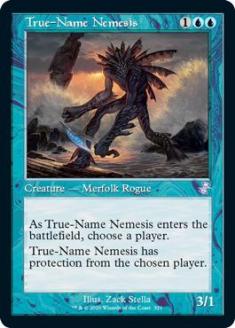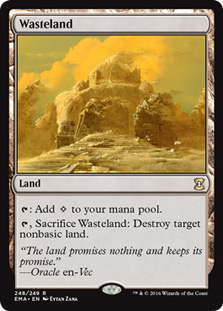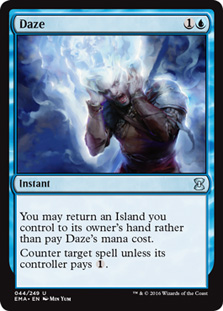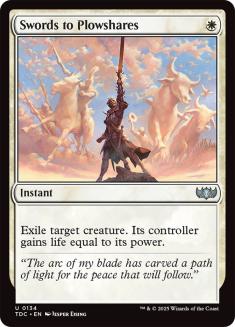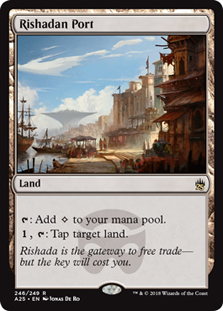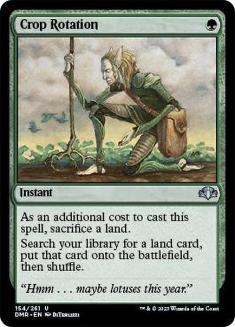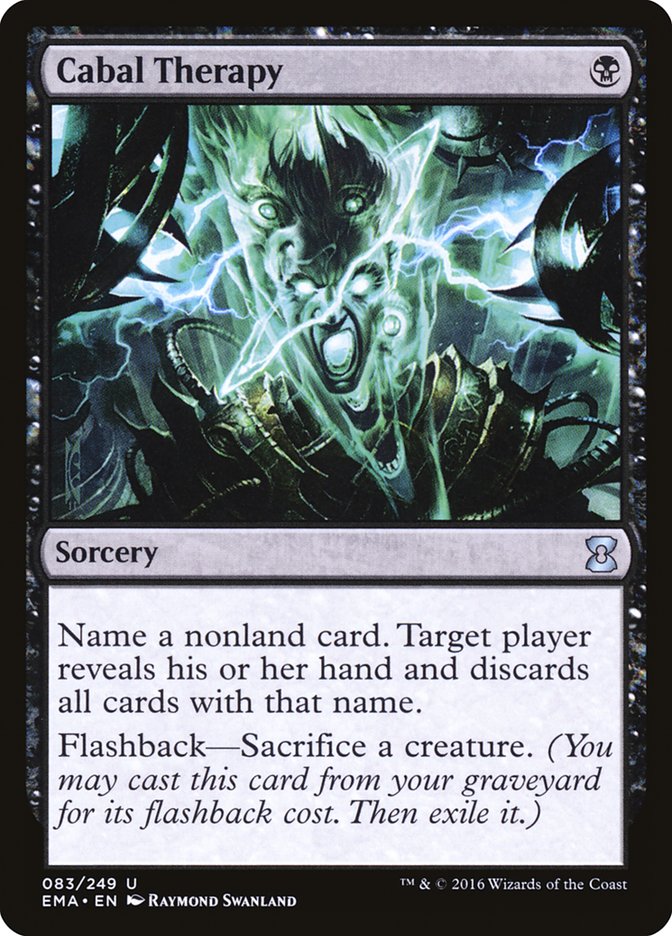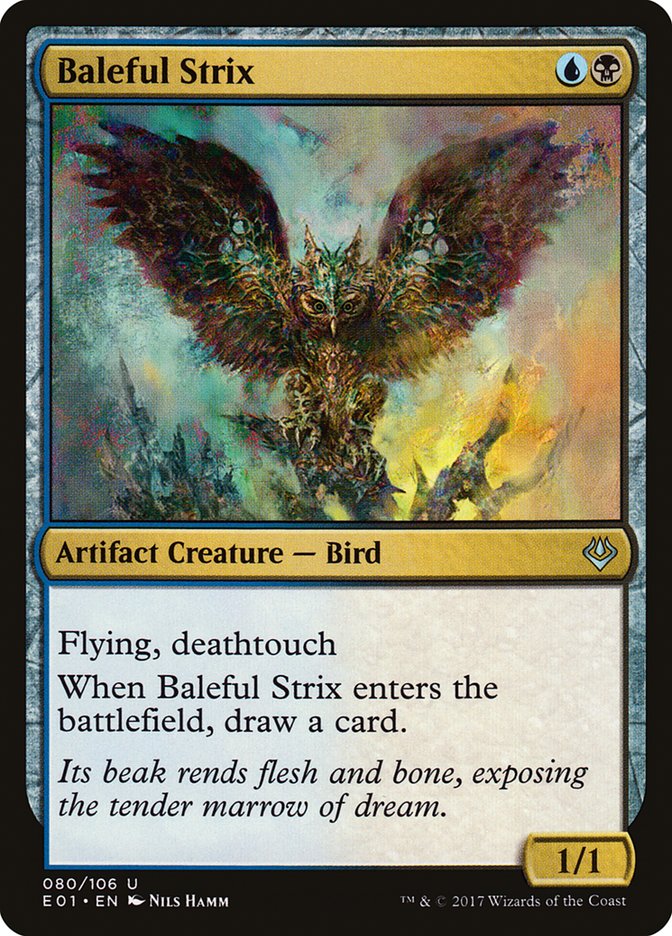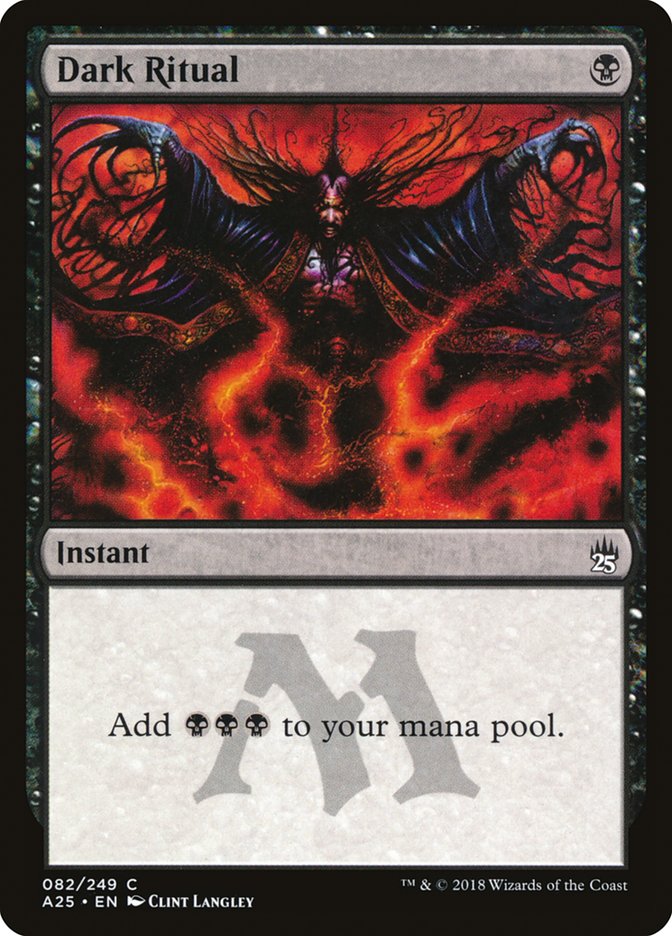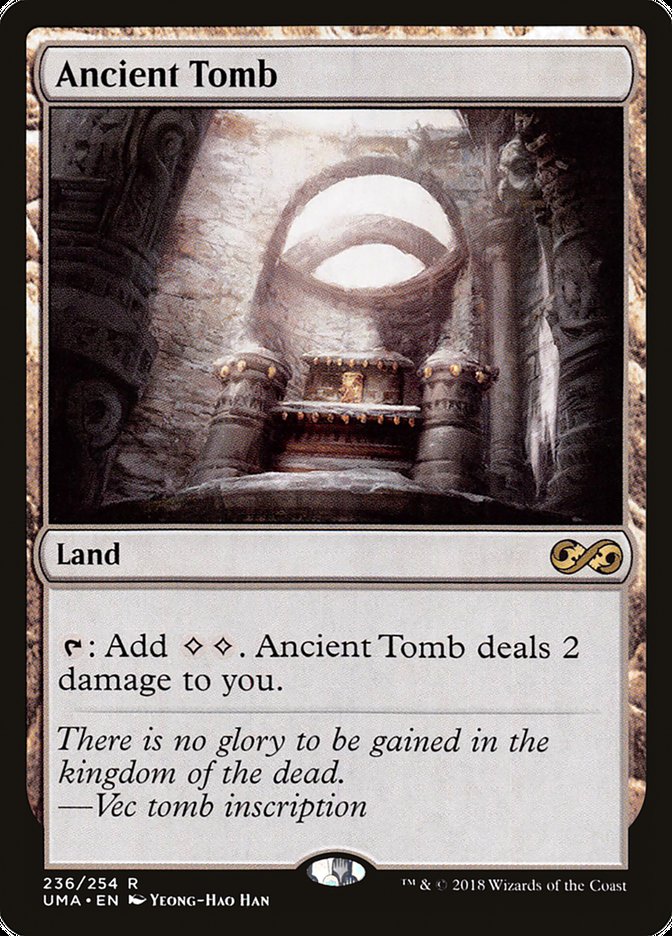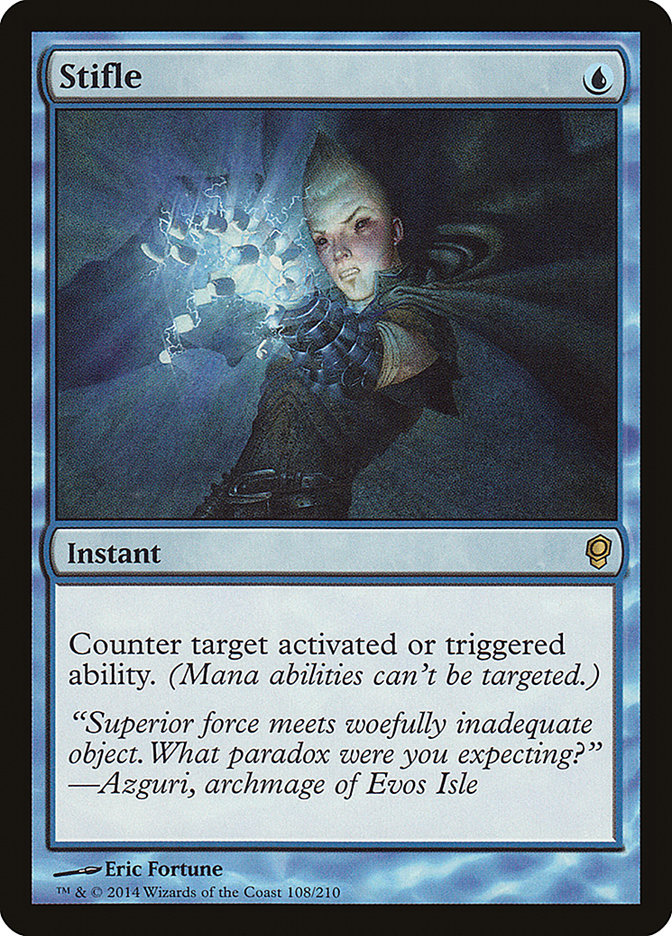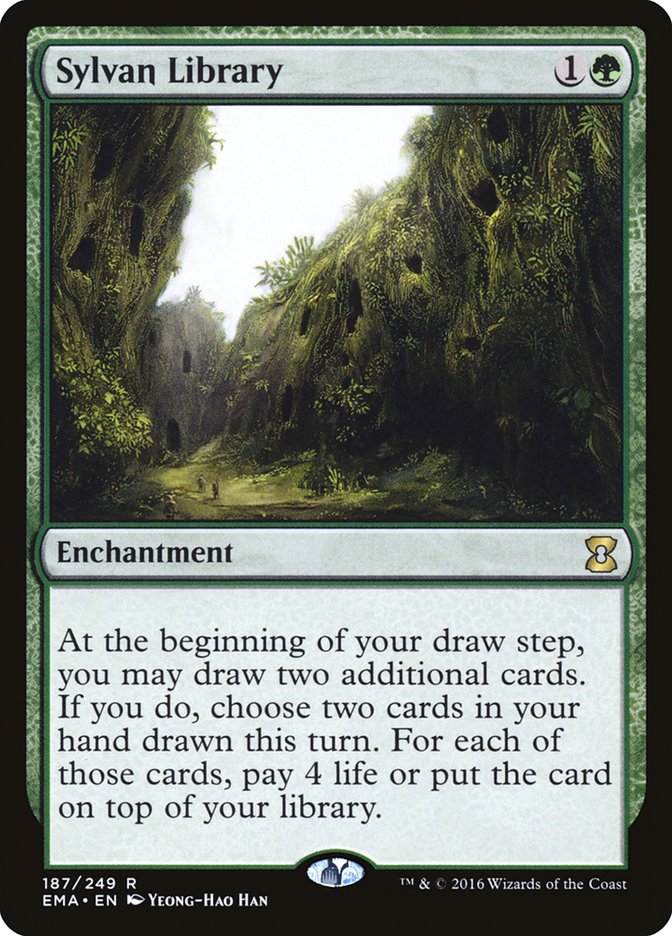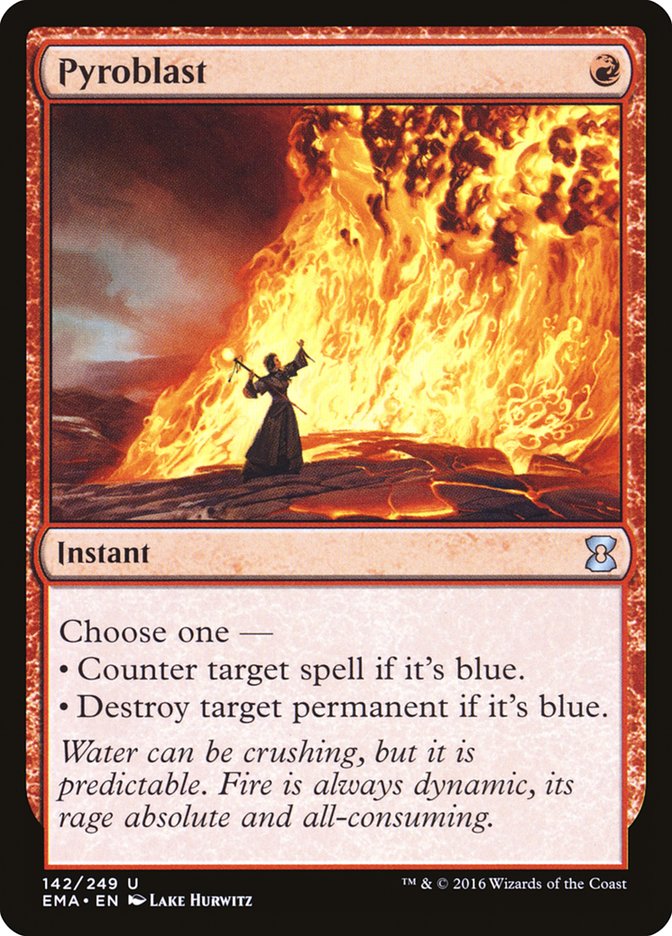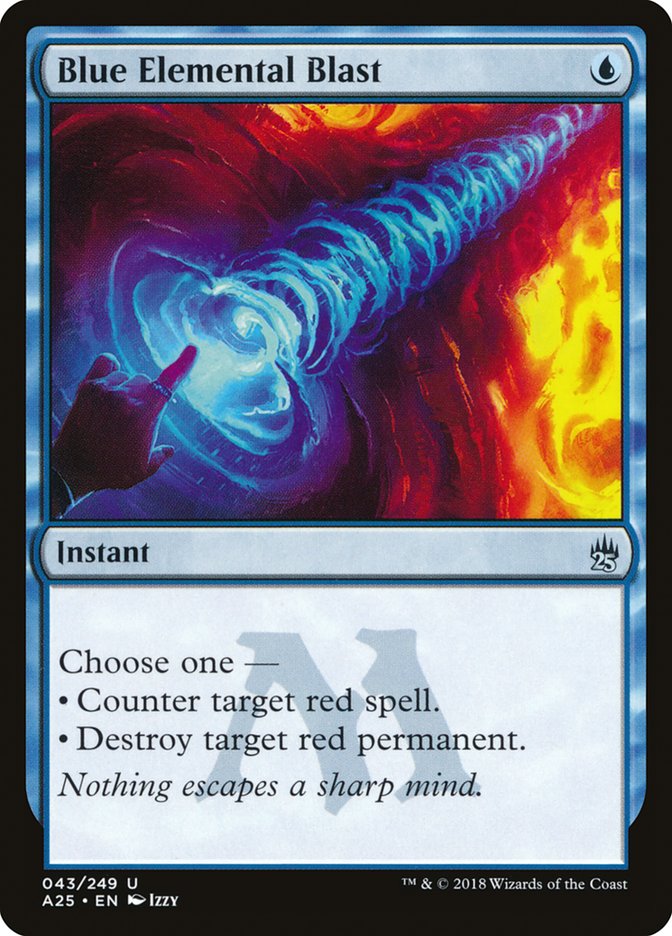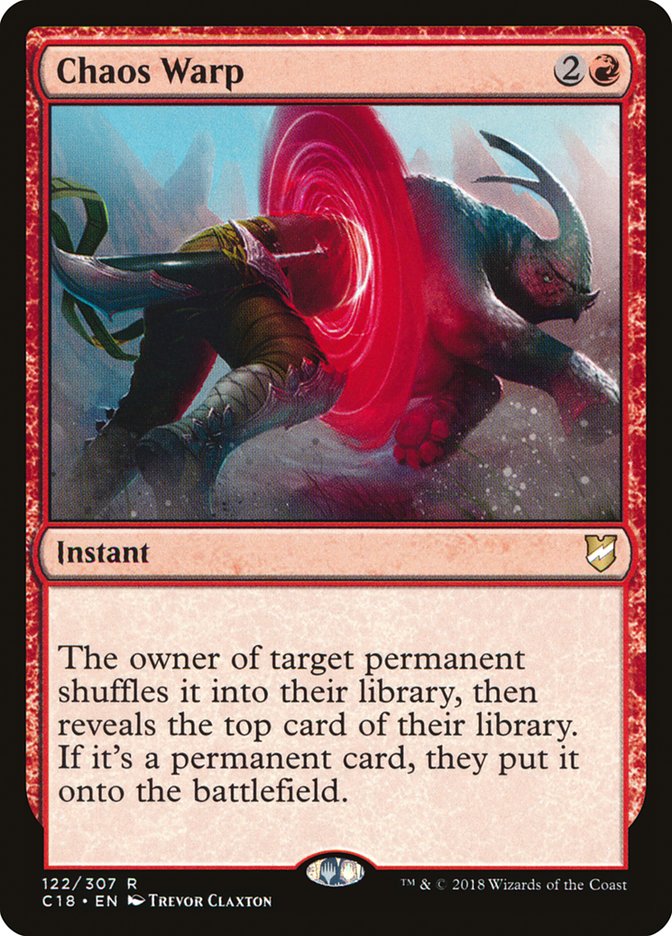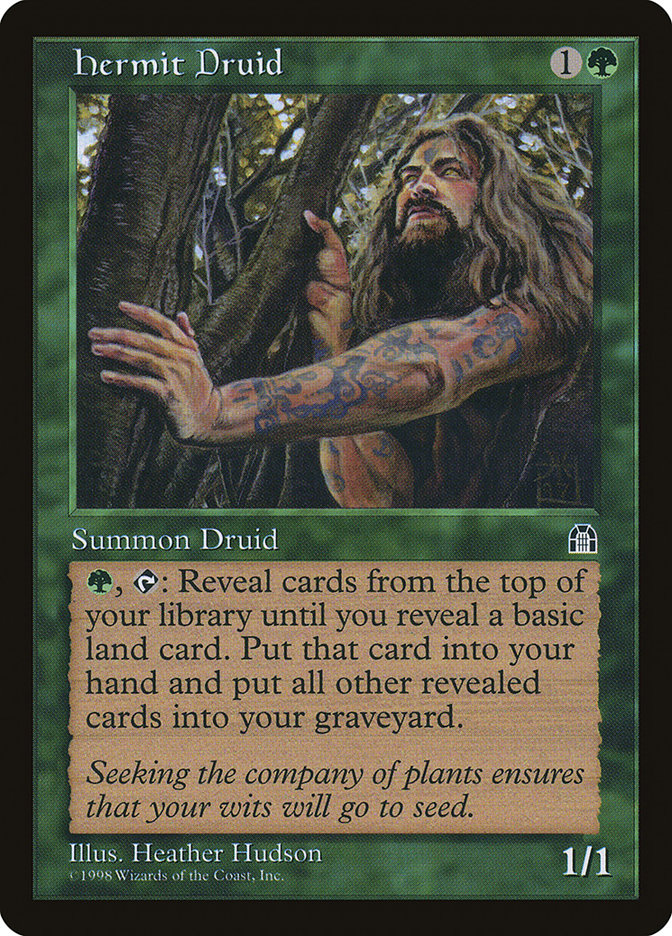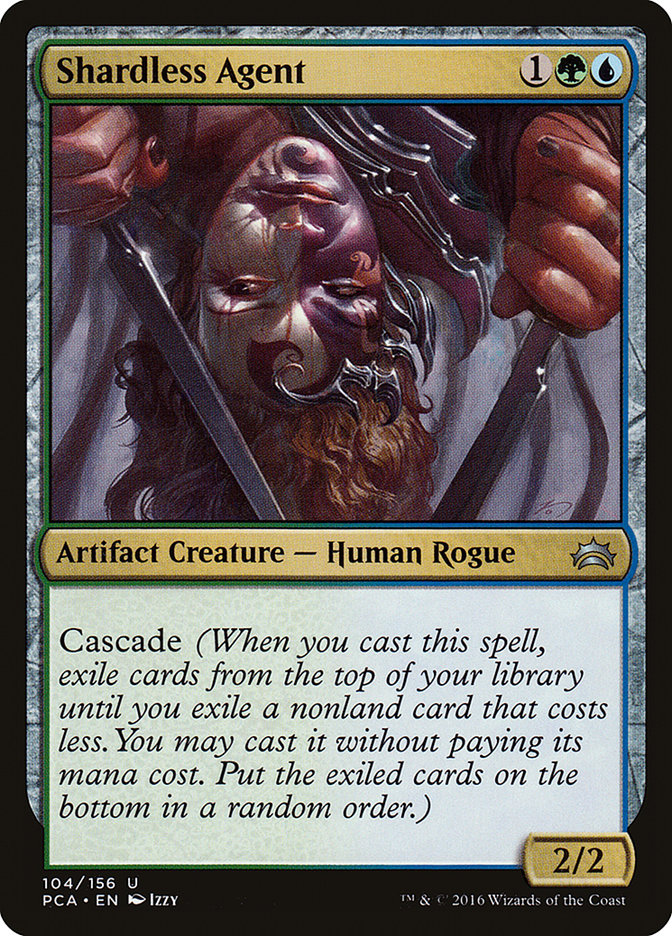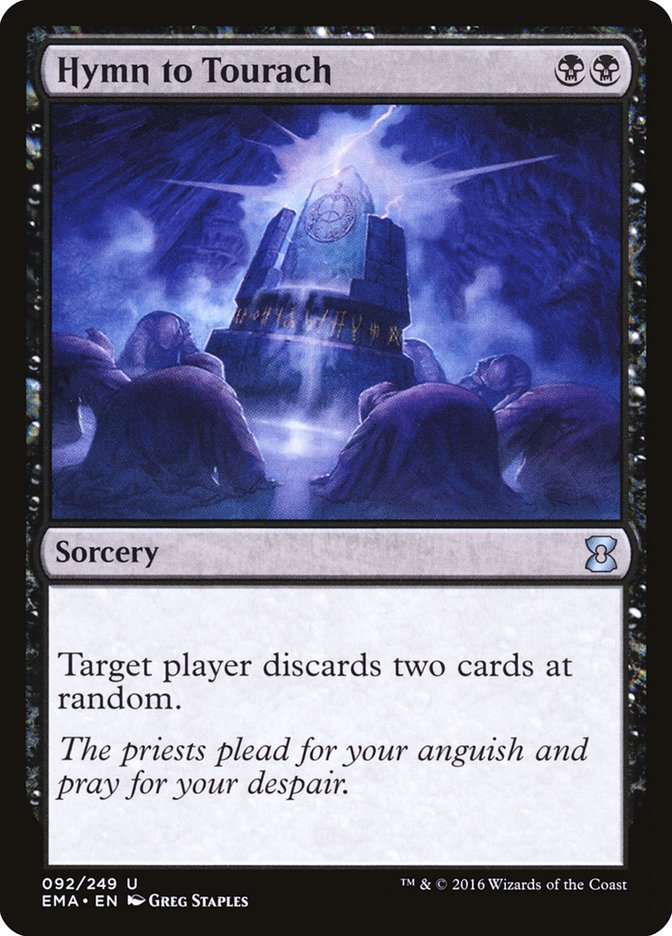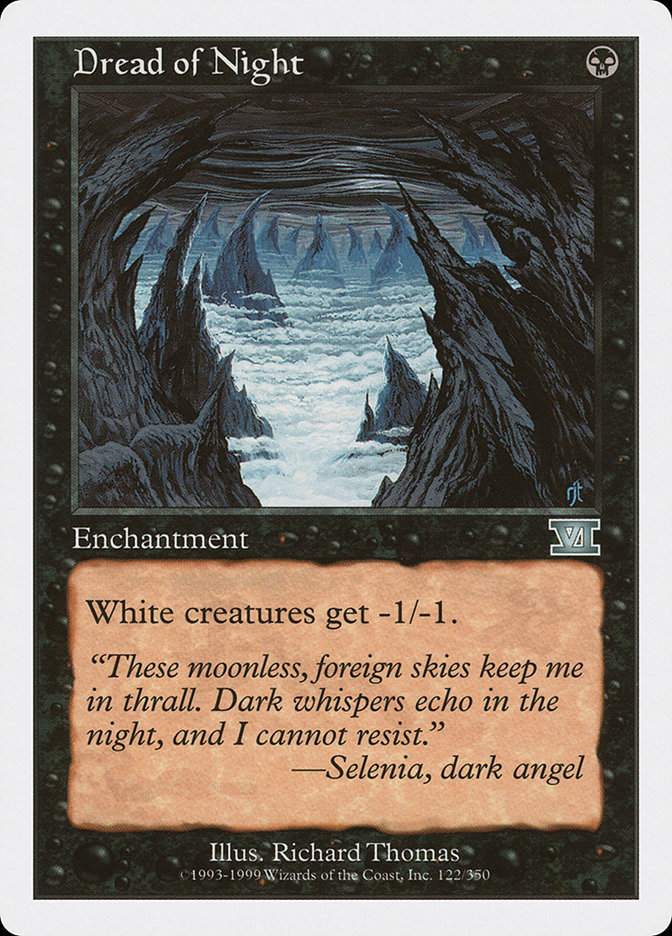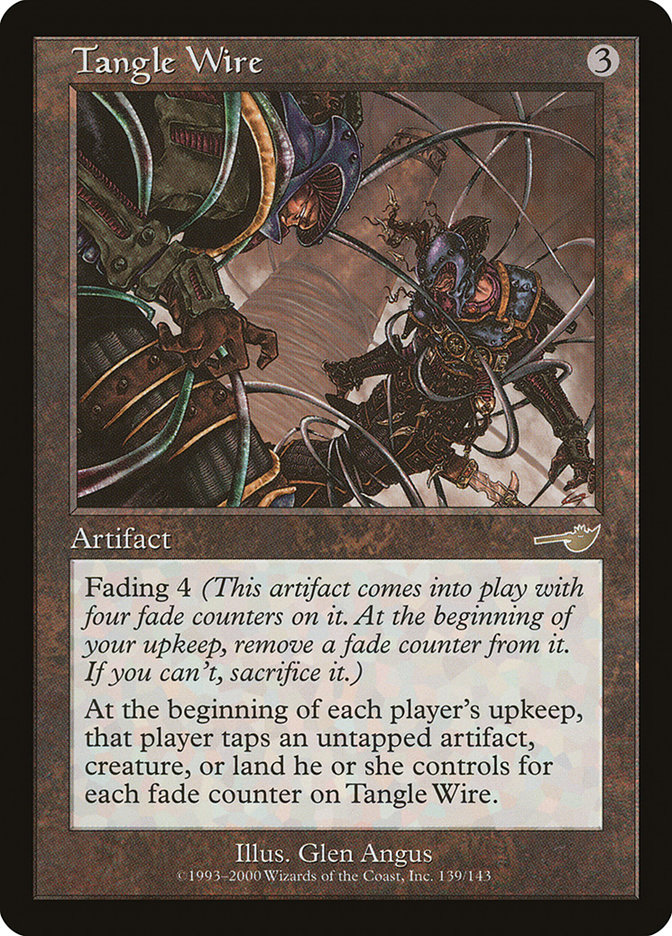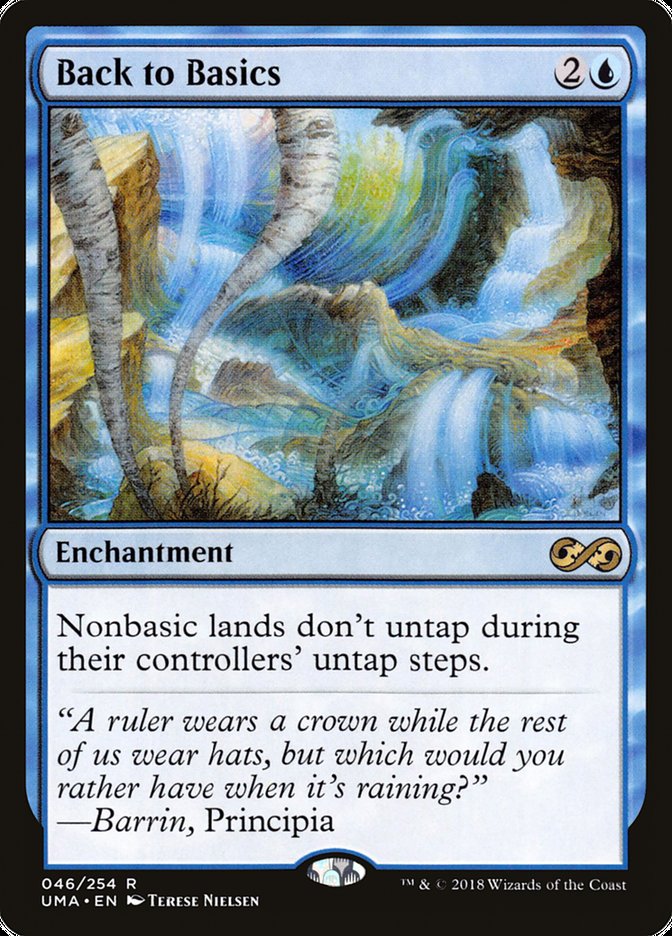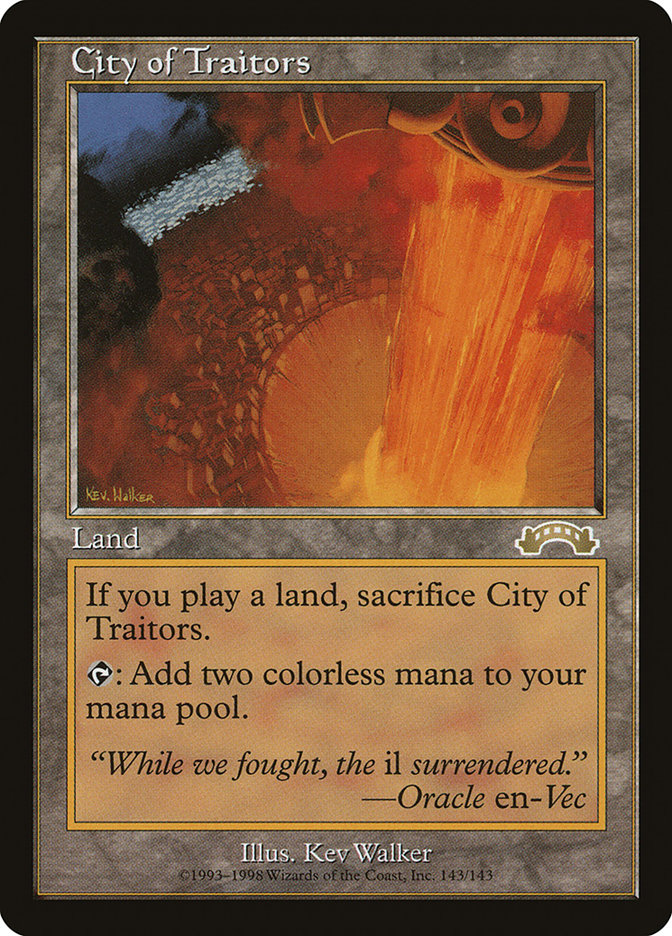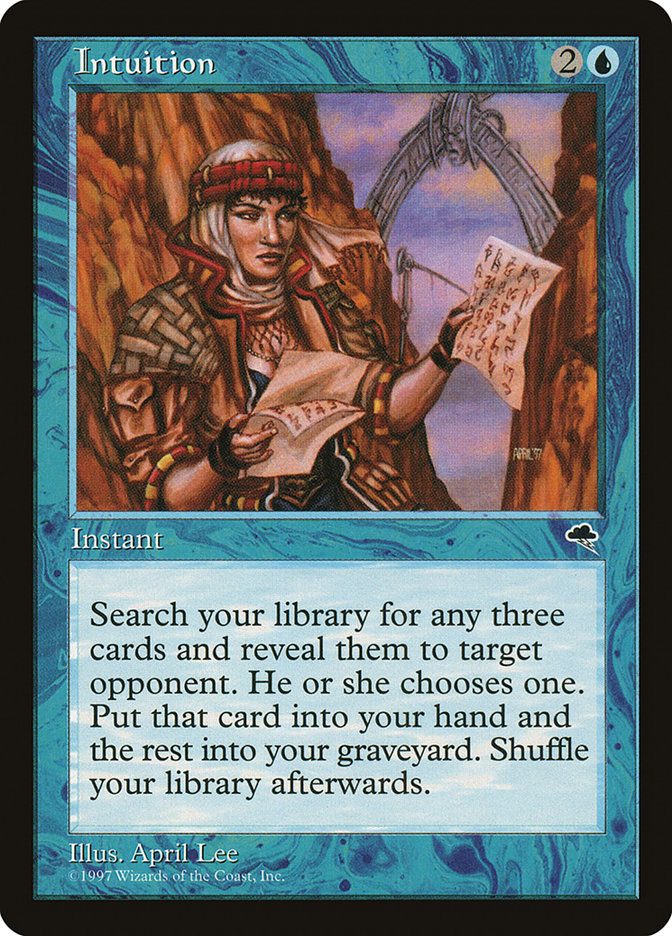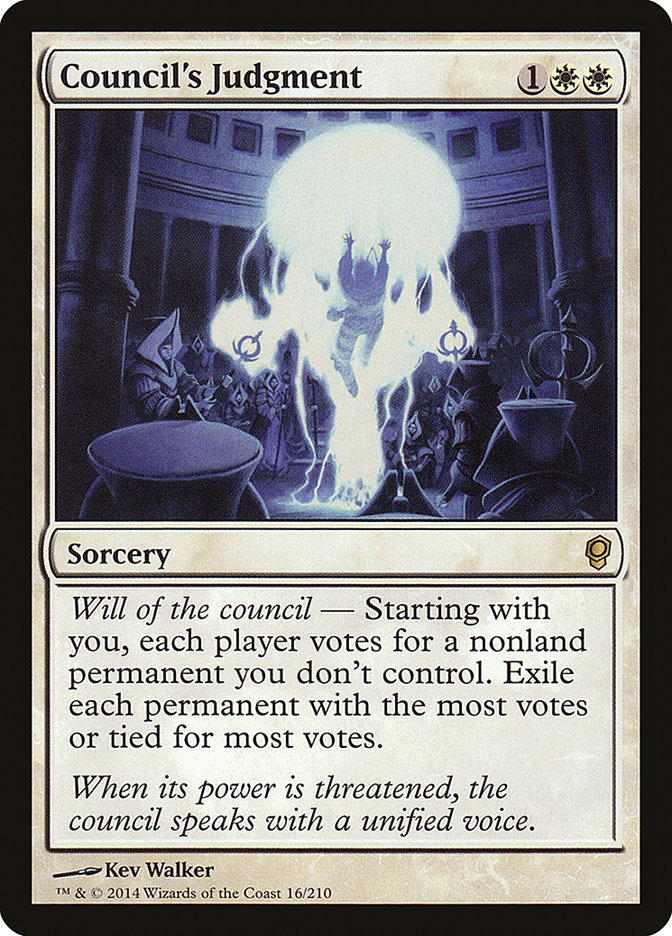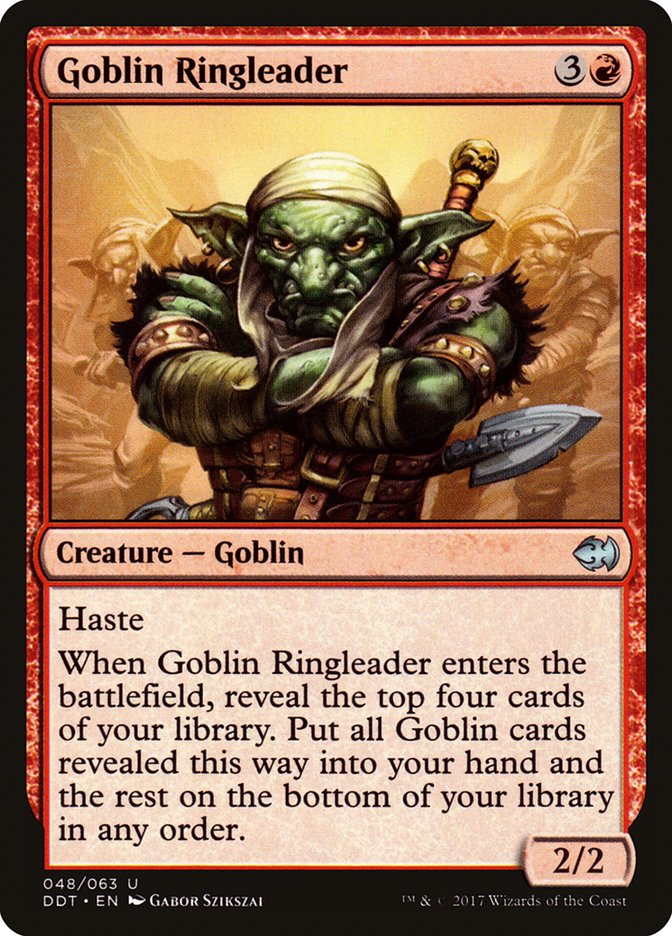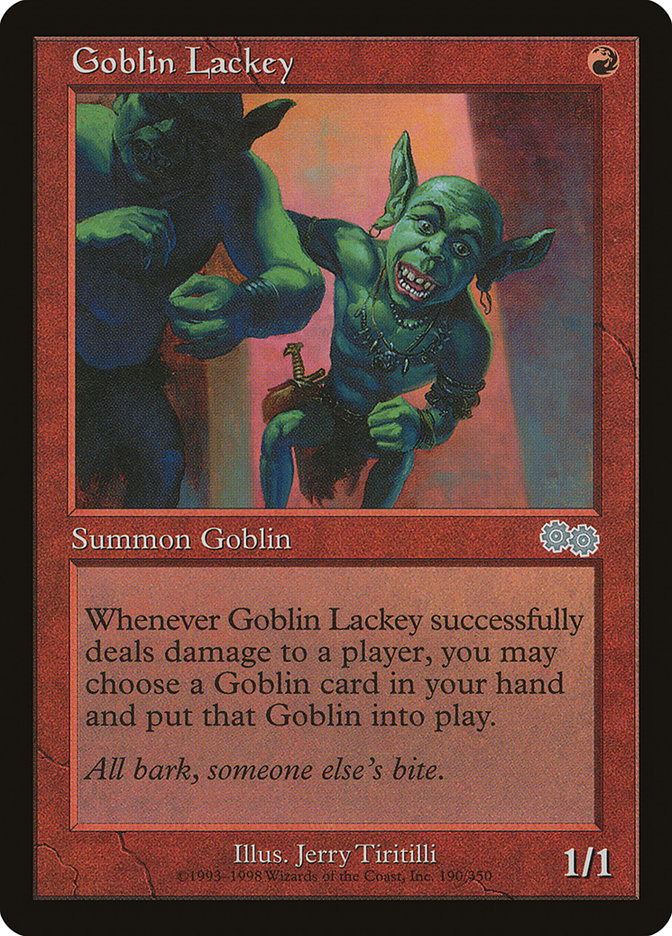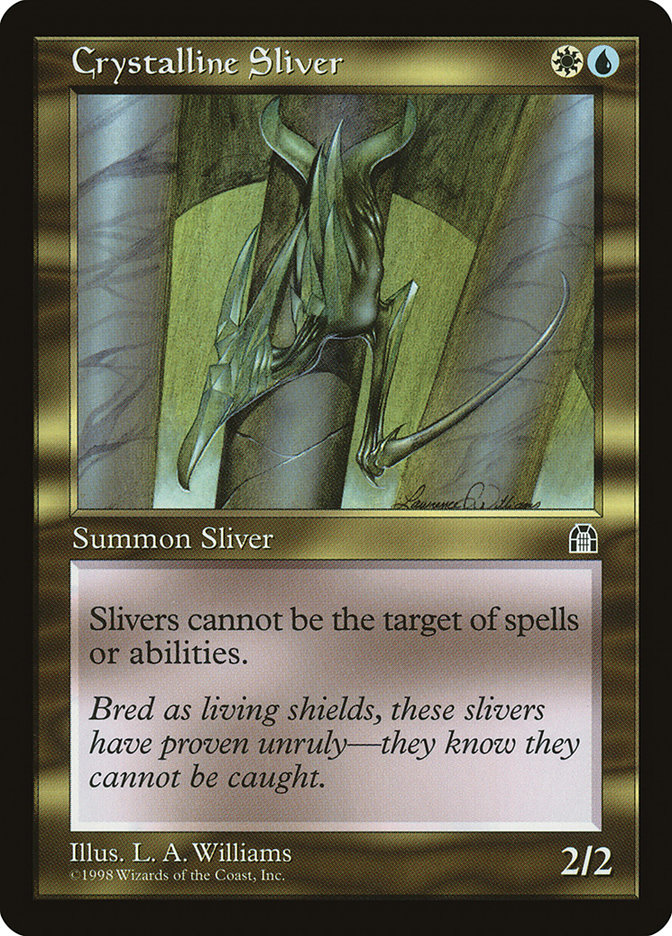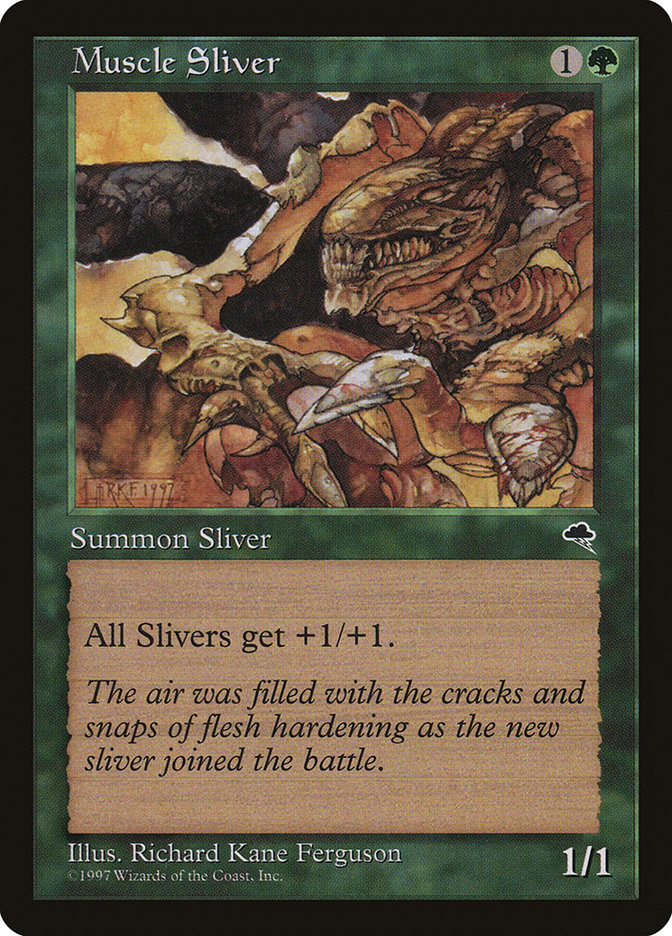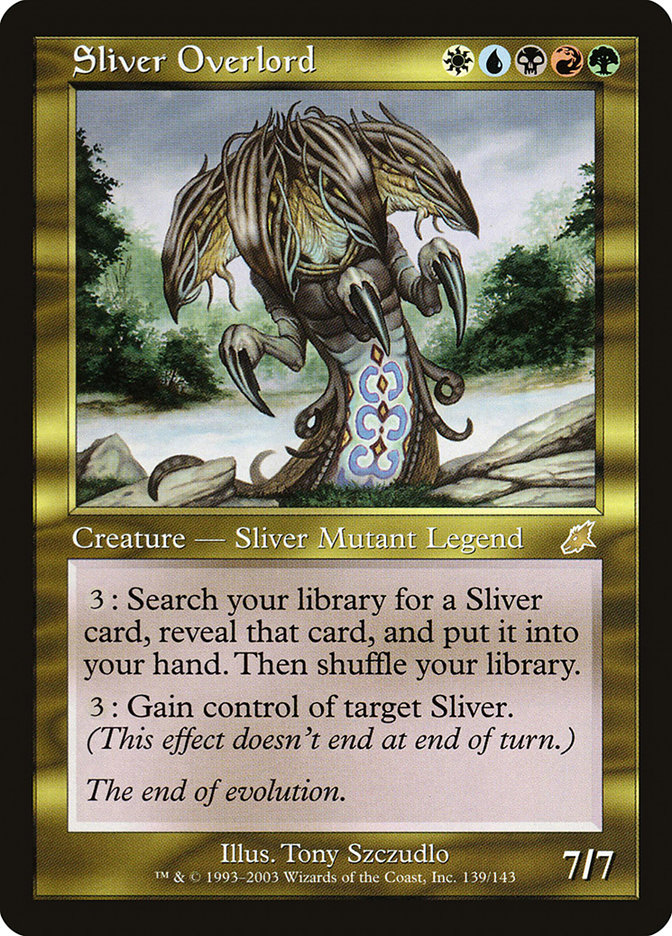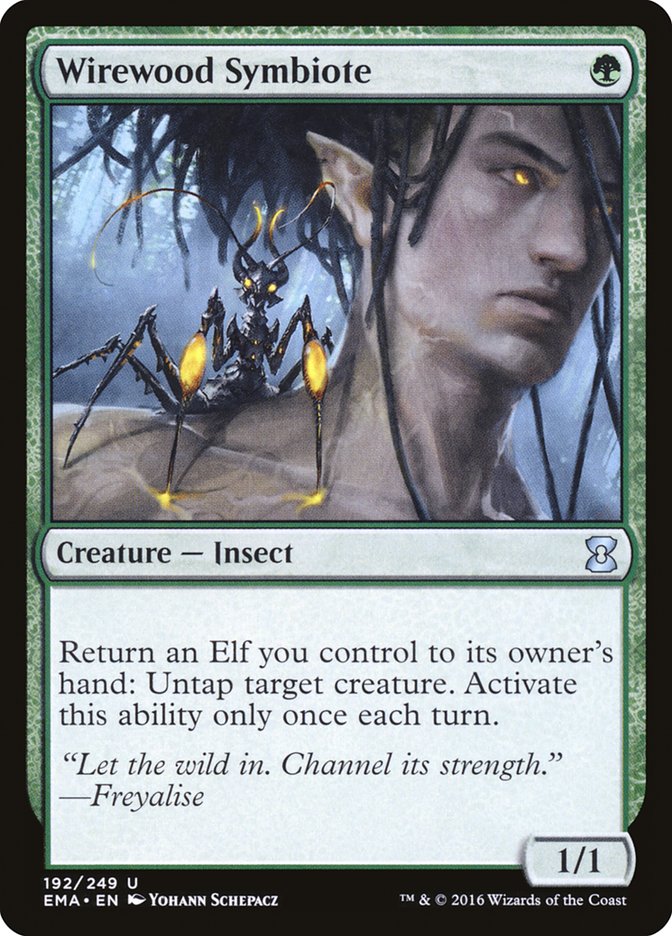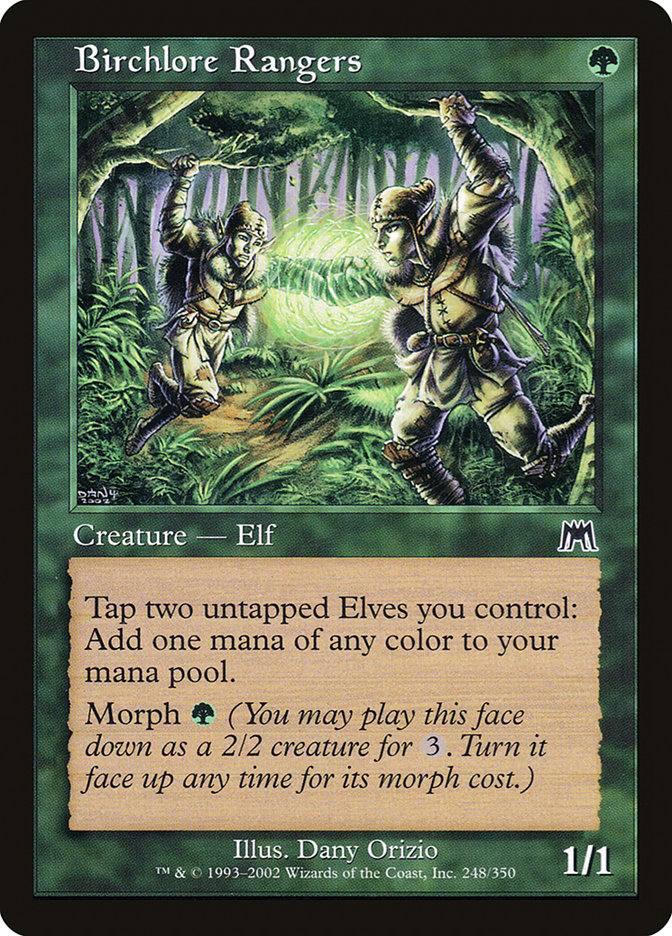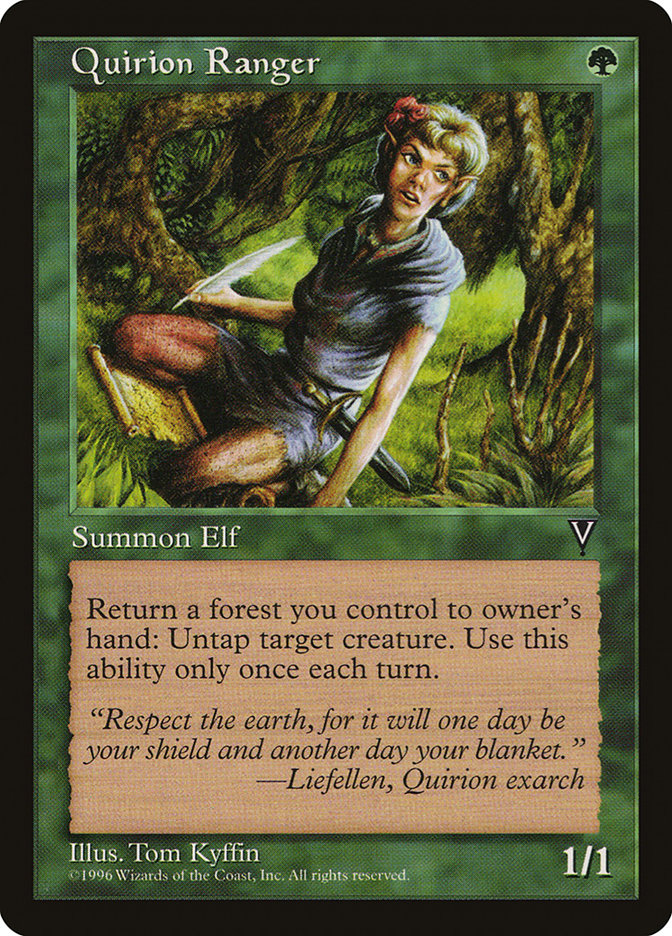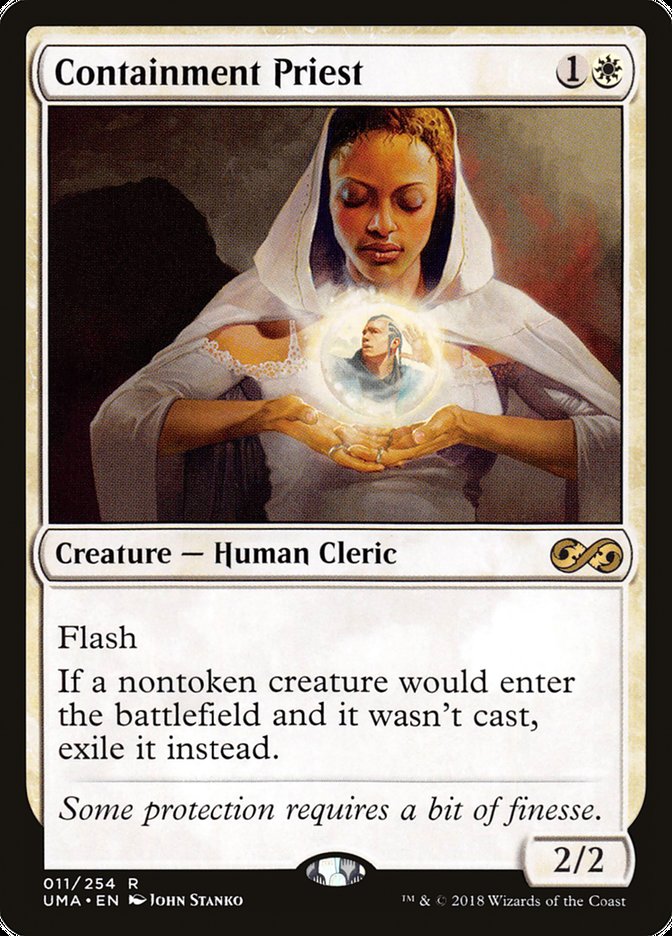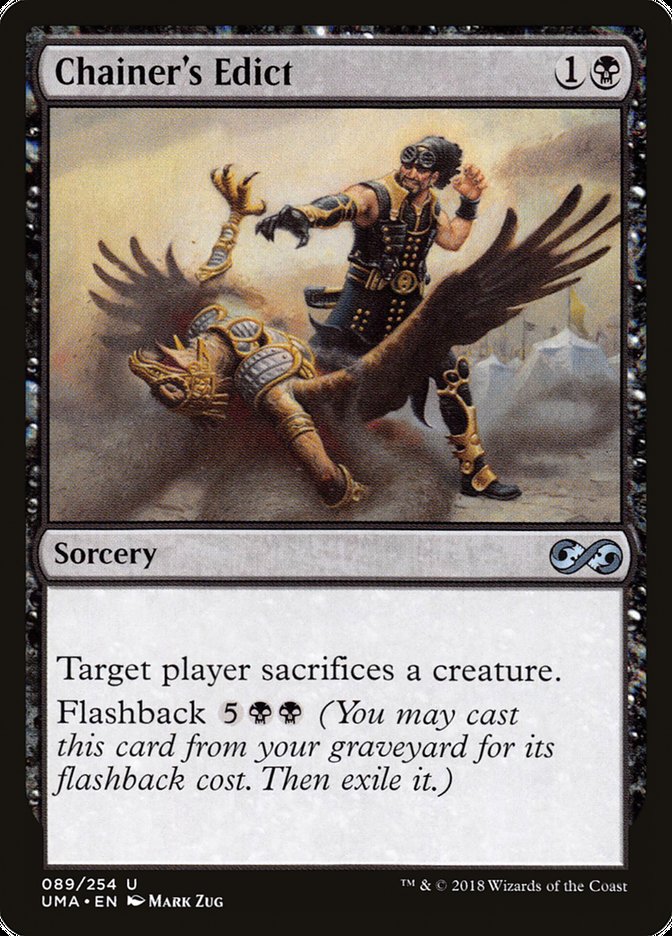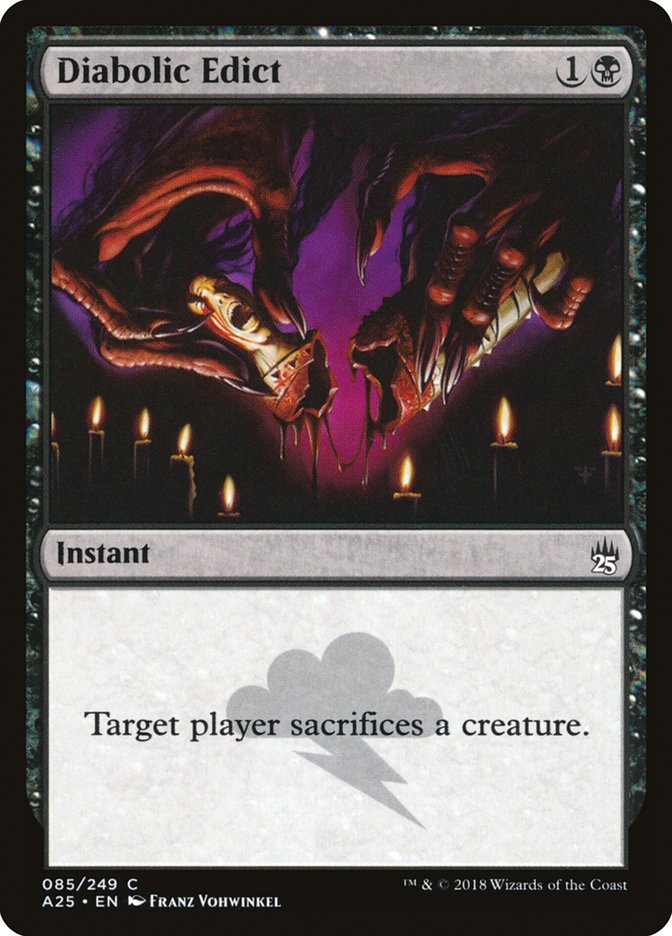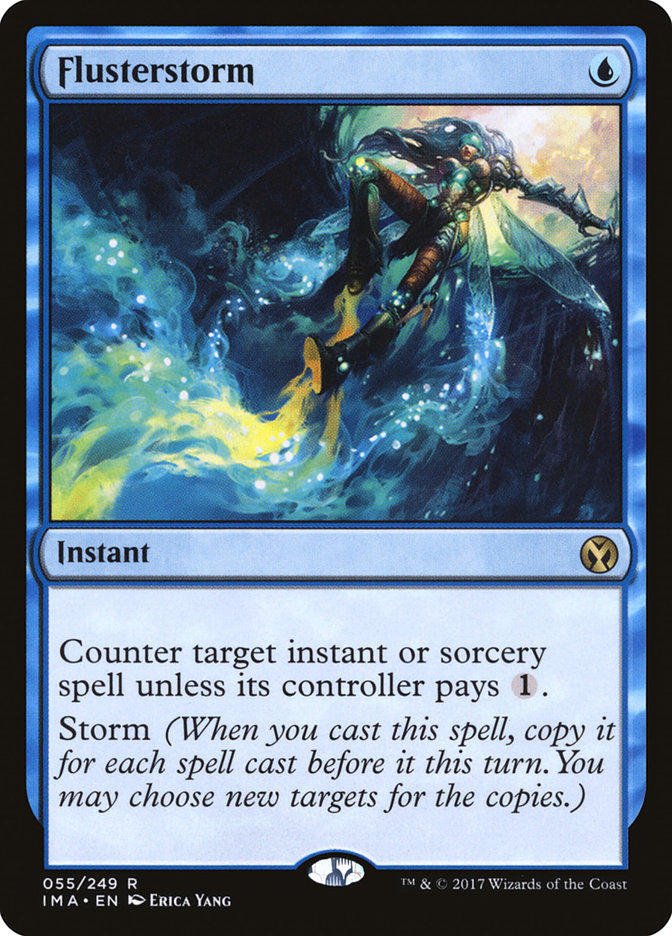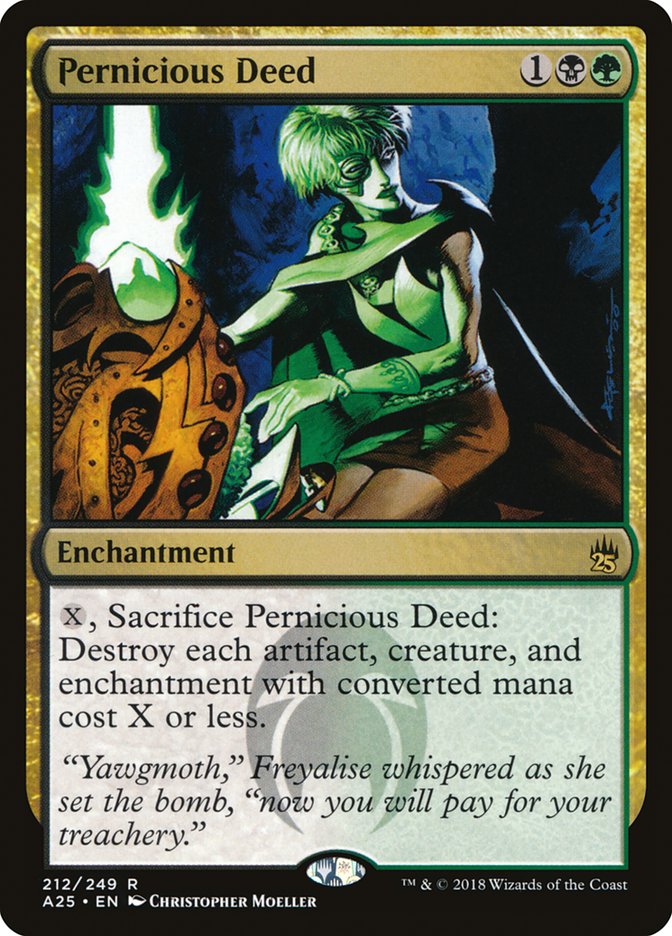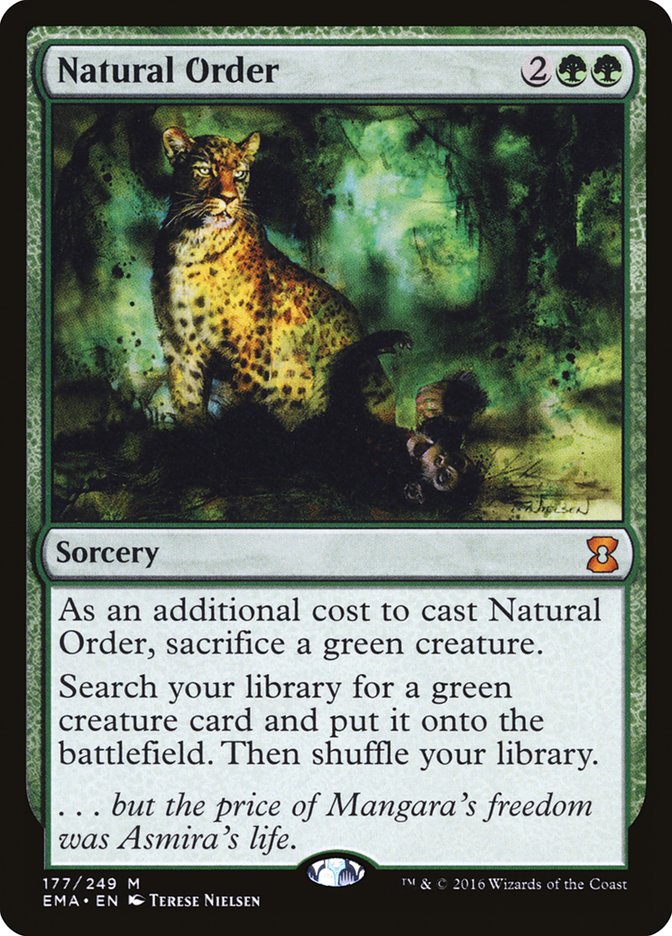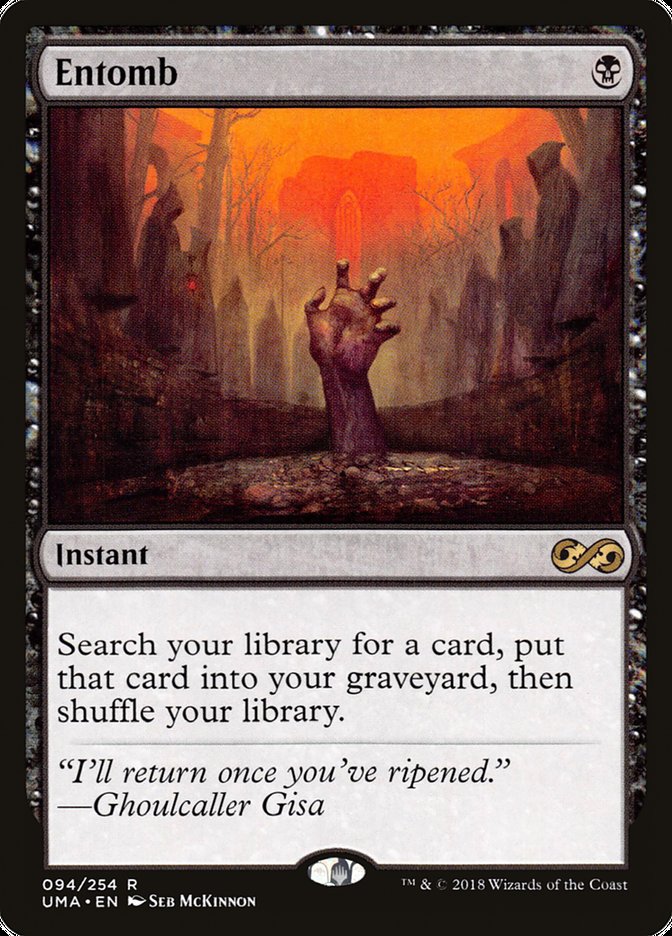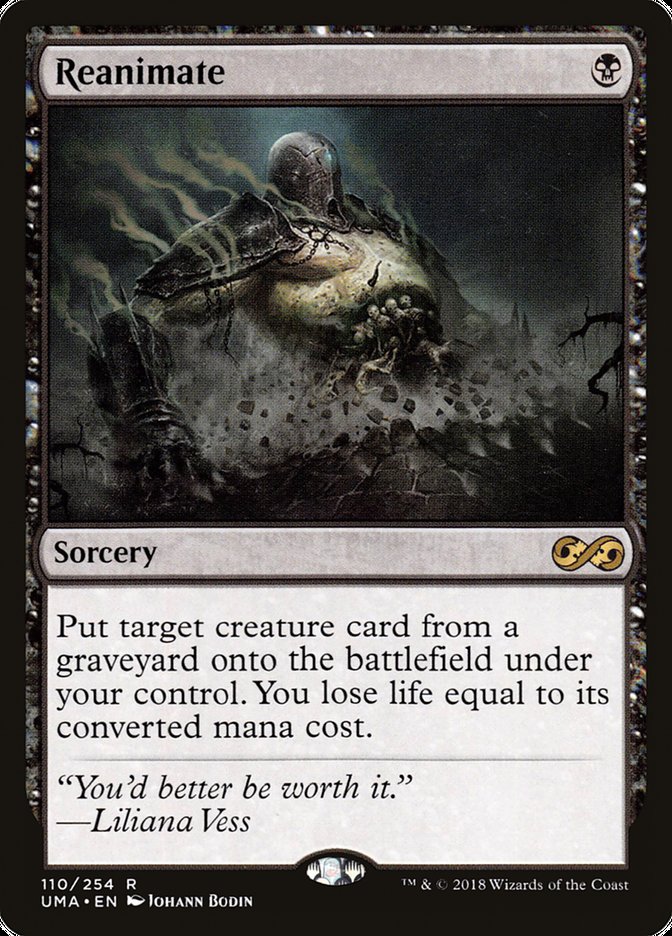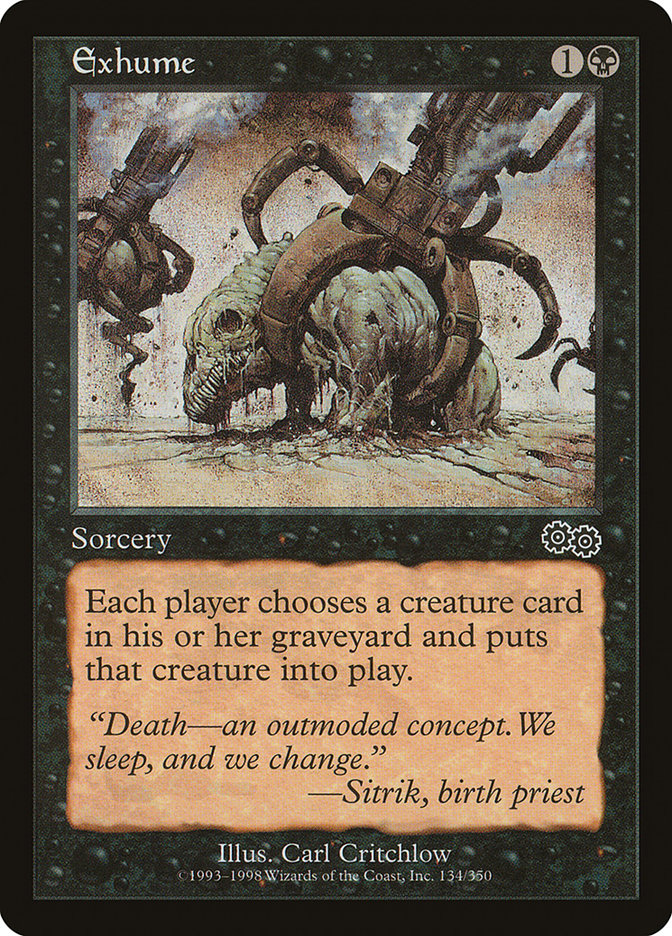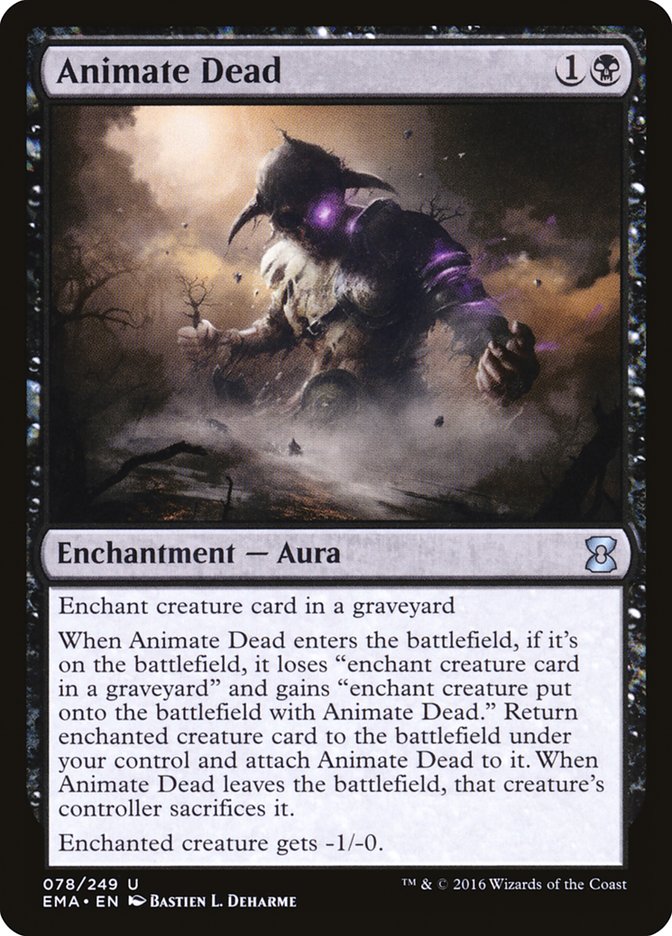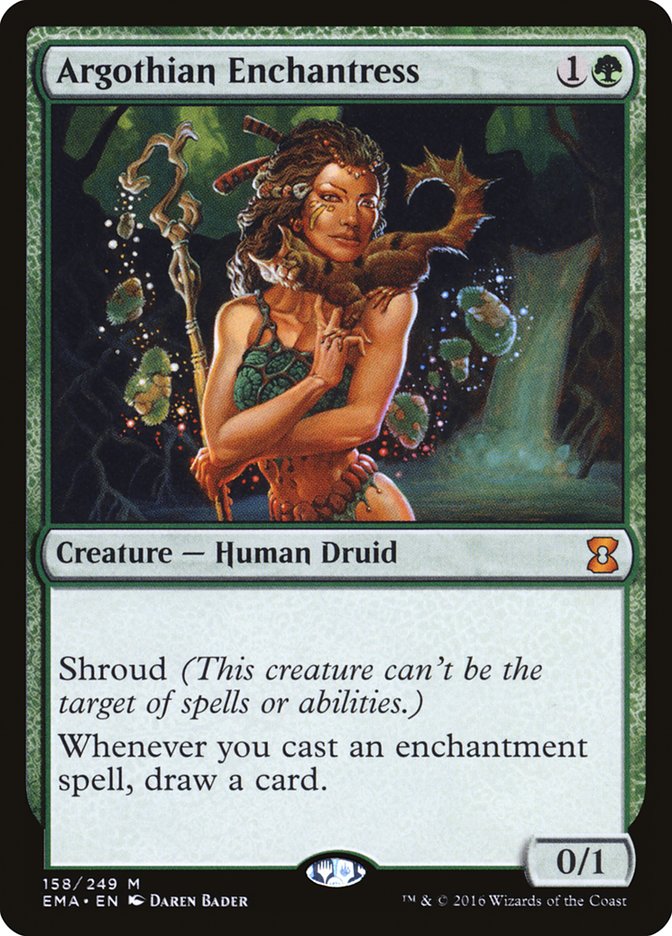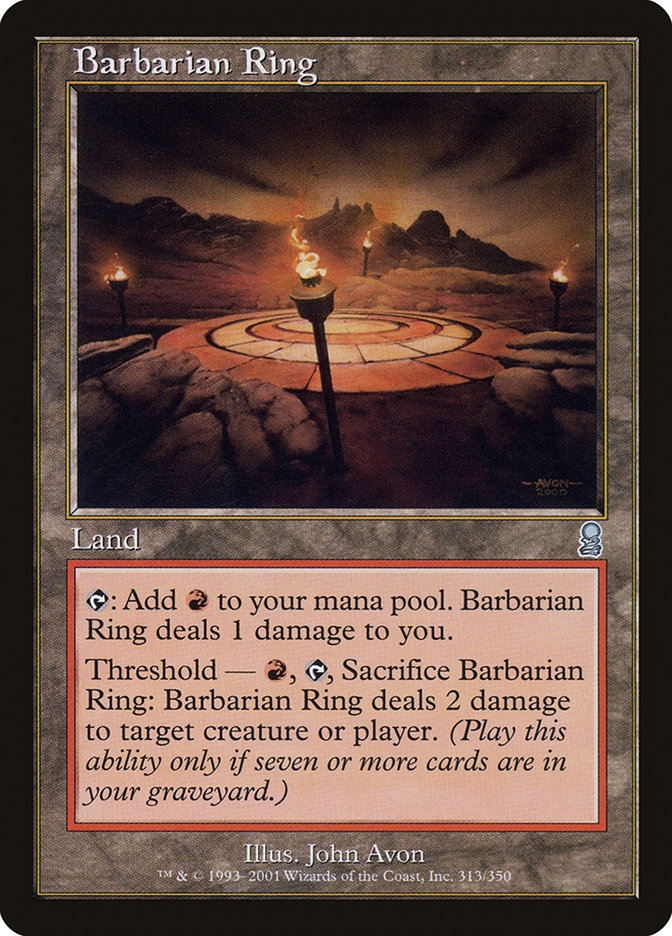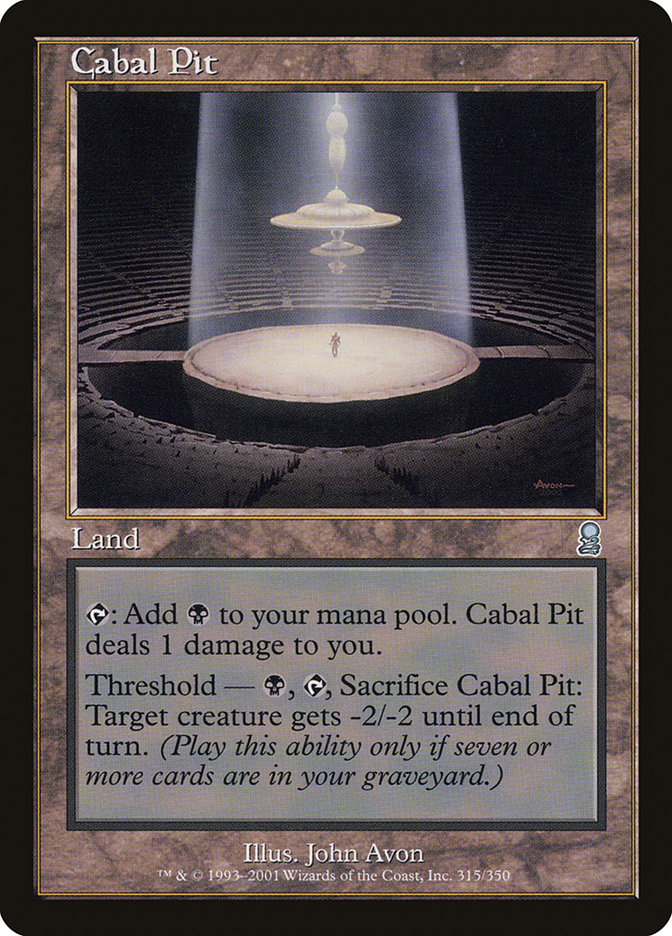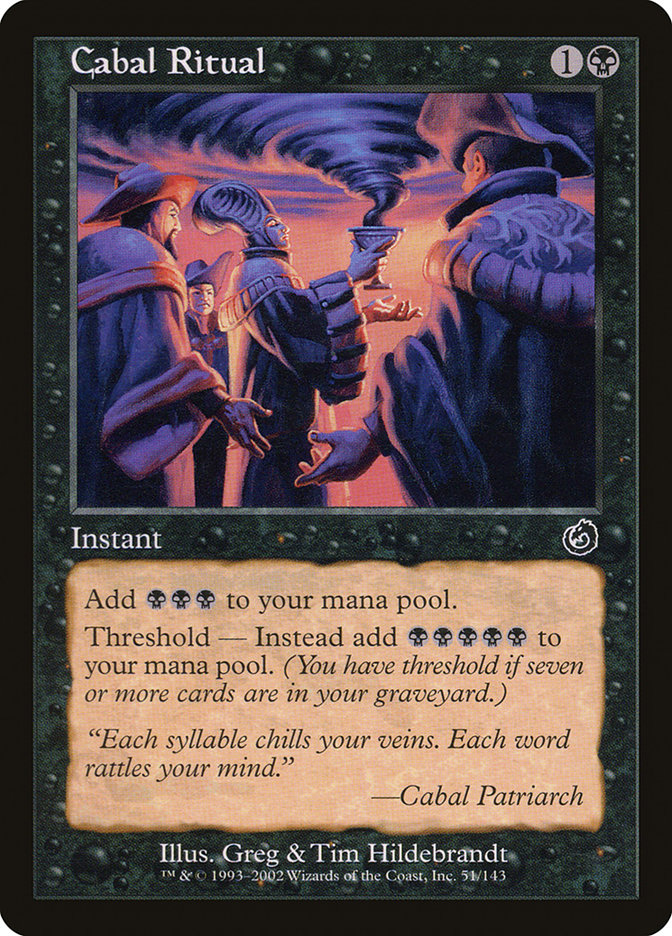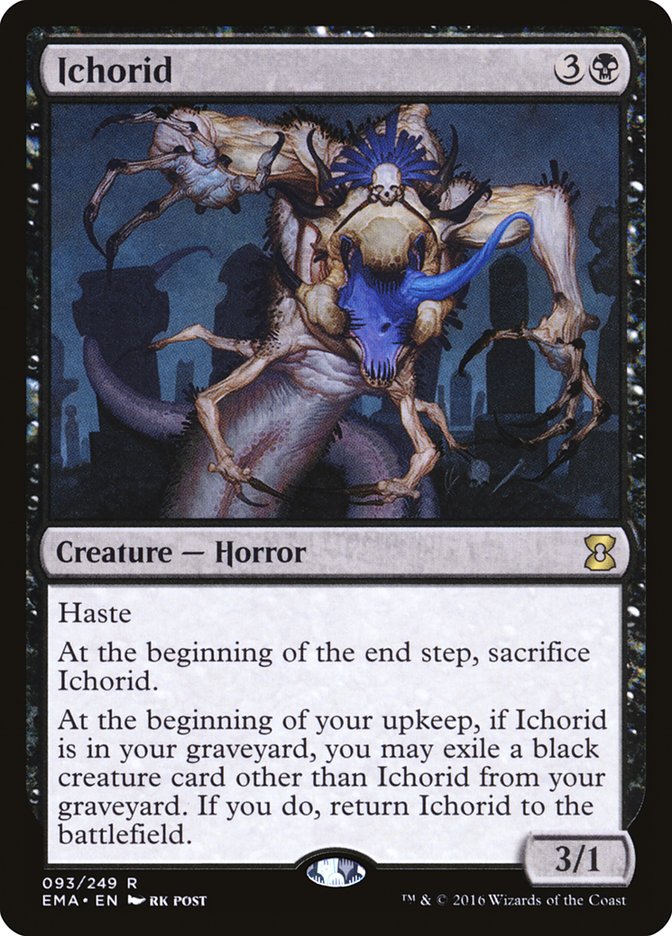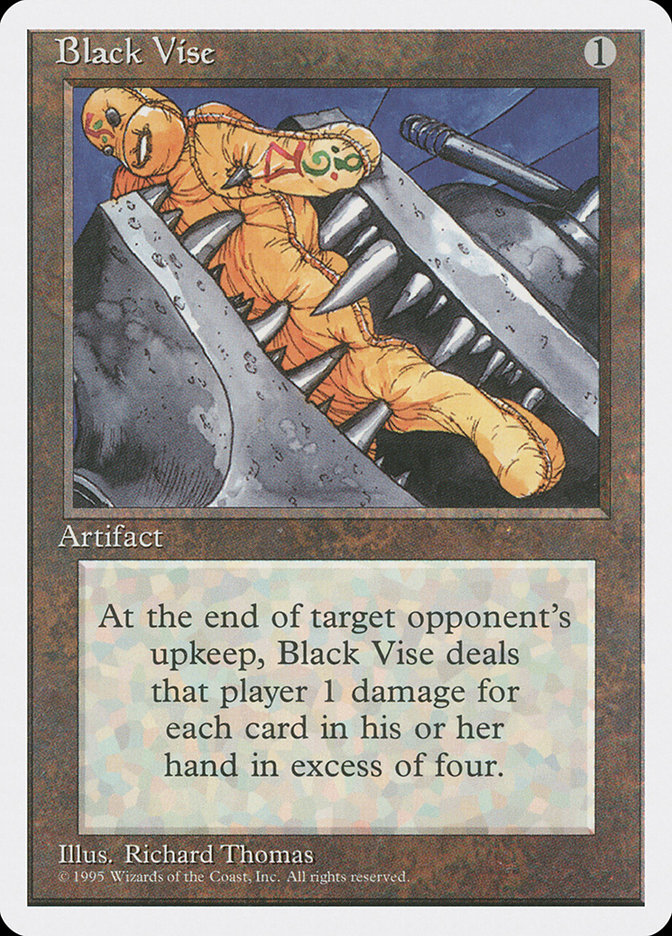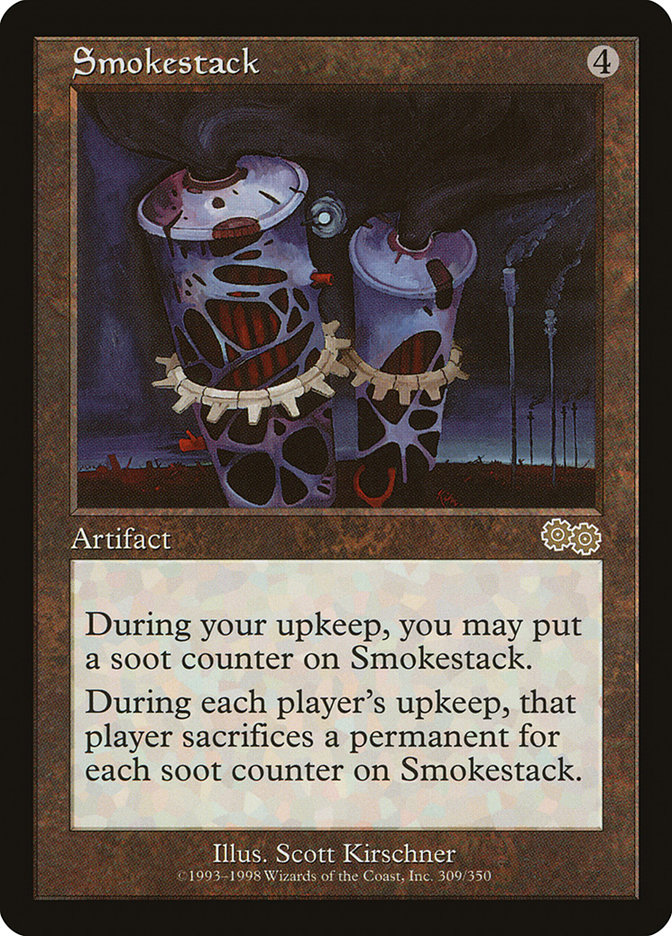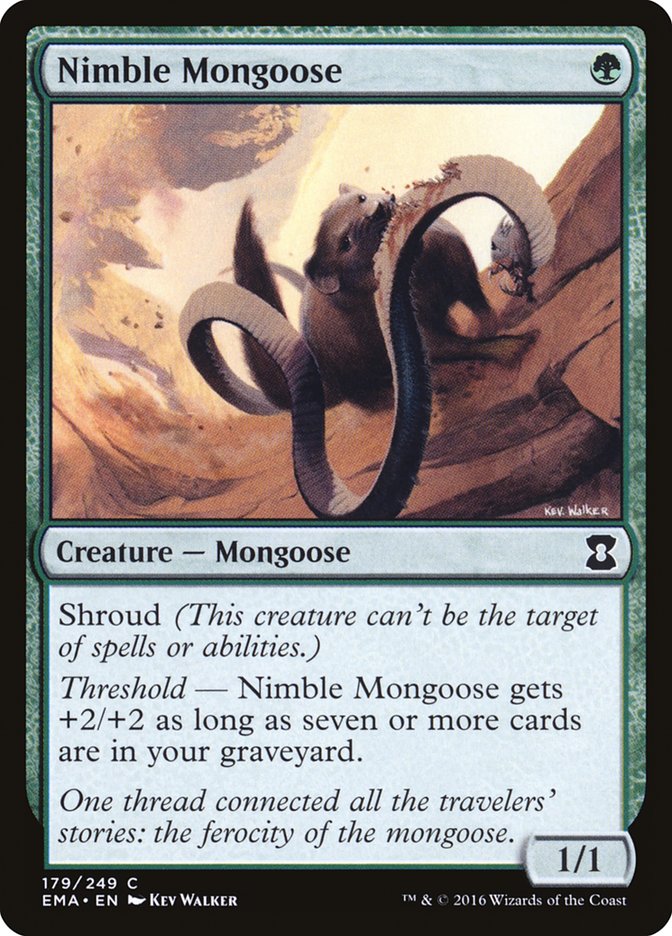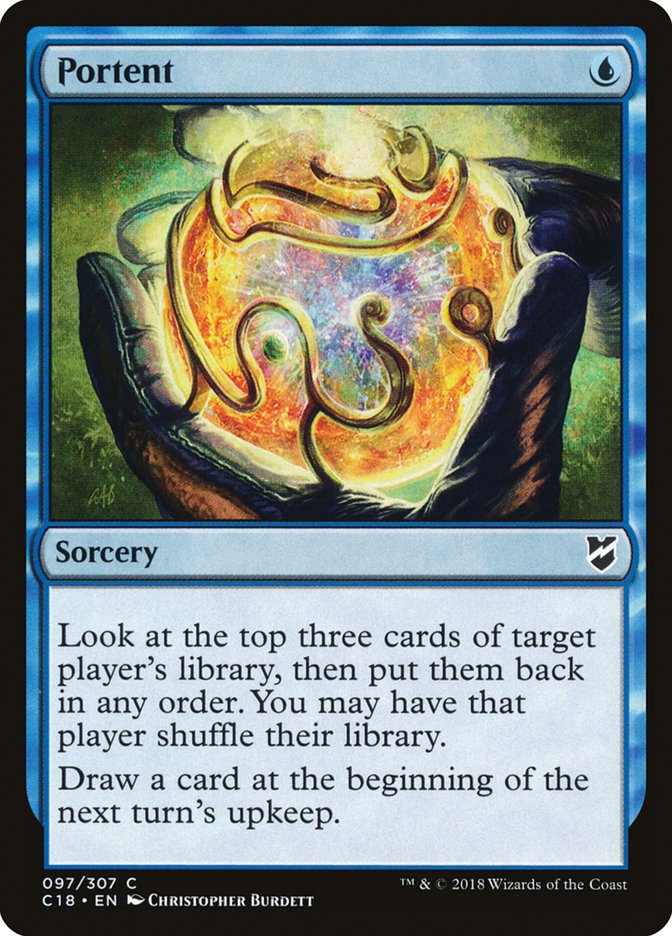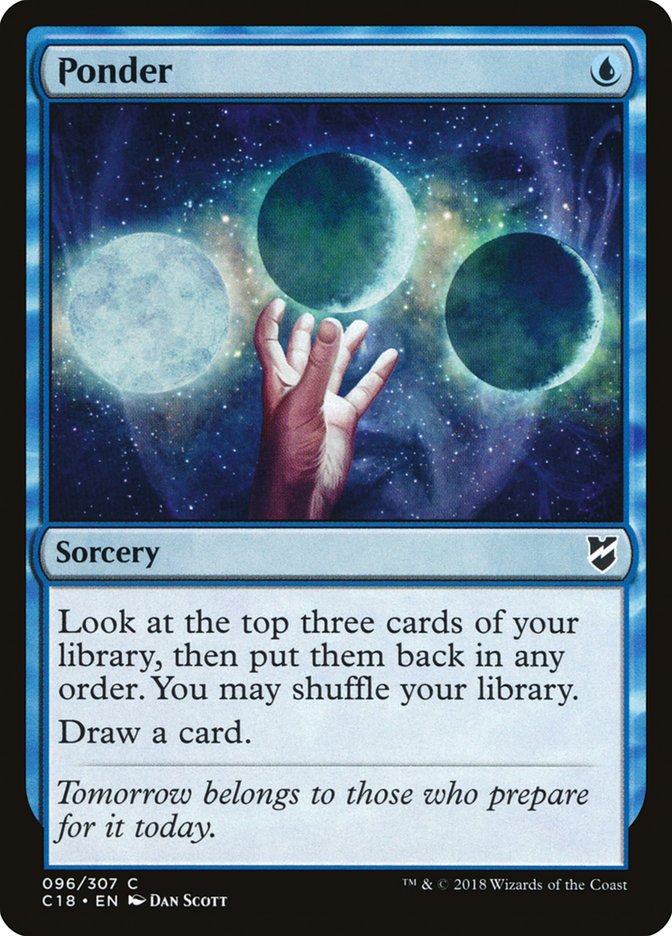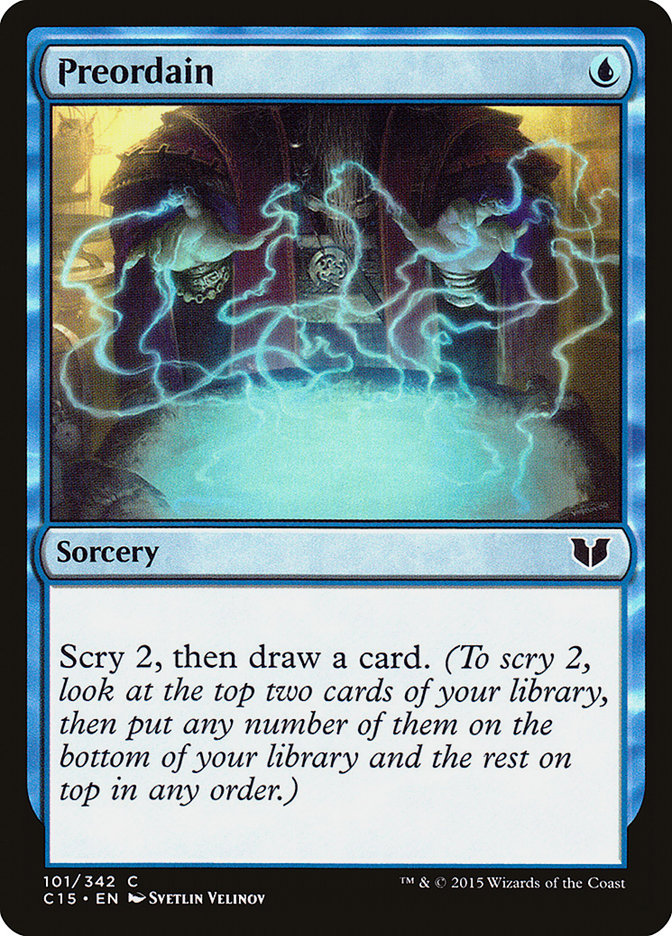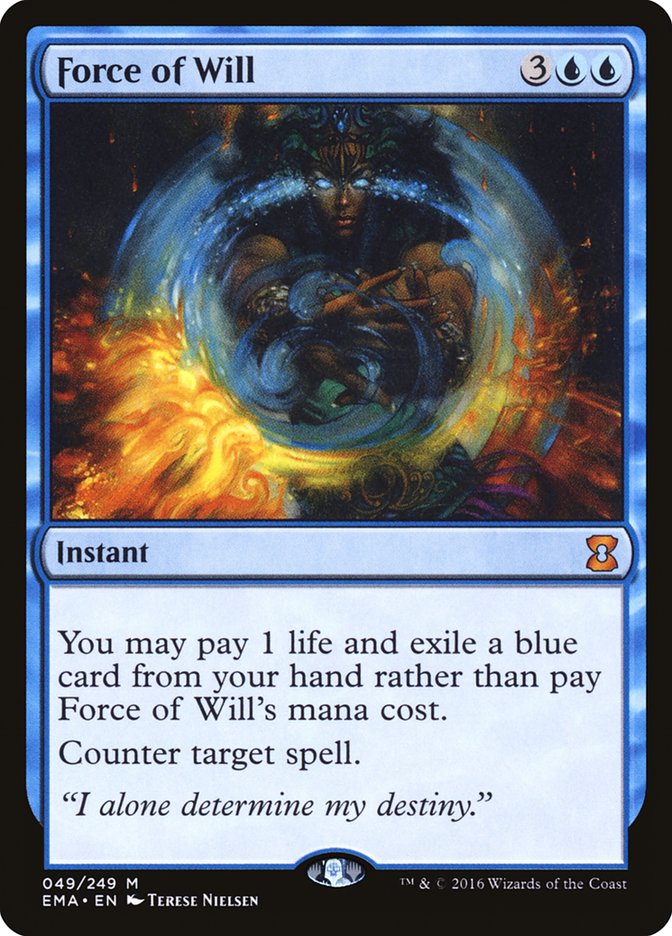Who’s ready for new Modern cards? Last week, Wizards of the Coast announced a new product coming out this summer:

Modern Horizons is a set that’s going to do to Modern what we’ve been watching Conspiracy, Battlebond, and Commander sets do to Legacy and Vintage for the better part of a decade now, with new cards being printed specifically with the power level of older sets in mind. The big difference in this case, and what’s had the internet abuzz for a week now, is that it’ll have a ton of reprints new to Modern. That’s right: all the reprints in Modern Horizons will be cards that weren’t previously legal. This means that, despite this being a Modern-pointed set full of reprints, it isn’t going to have the Tarmogoyfs, fetchlands, Vendilion Cliques, and Dark Confidants that we’ve come to expect from the different flavors of Modern Masters over the years.
What We Know for Sure
Past knowing what won’t be in the set, there are a few things that we’ve been told from the above announcement that can help us get an idea of what is going to be in the set.
Firstly, it’s explicitly stated that the intent of Modern Horizons isn’t to completely warp the entire format or turn it into a different version of Legacy.
This means that the more powerful cards that make up today’s Legacy metagame aren’t things we should be expecting to see in this set. It’s possible that some popular cards end up making it in, but they’re going to look more like role-players than format linchpins. Cards that invalidate entire strategies or warp the way that people must build their decks in Modern are almost certainly out.
In the product announcement for Modern Horizons, the biggest talking point for cards being included were things that would augment existing fringe strategies. These are the kinds of cards that may be powerful tools in decks but aren’t necessarily meant to stand on their own.
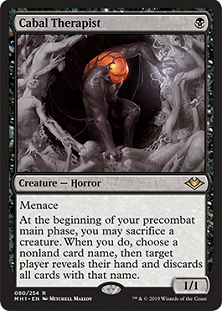
Cabal Therapist is an example of an incredibly powered-down version of a Legacy staple, Cabal Therapy:
The differences between the cards are obvious: creature versus sorcery, immediacy versus planning, and so forth. What this card tells us is that Wizards of the Coast is very interested in injecting the format with cards and effects that have been well-loved throughout Magic’s history and are powerful enough to see play in Magic’s oldest formats.
Past that… there isn’t much. All we must go off of are more or less the following guidelines:
- Wizards of the Coast isn’t interested in completely reshaping Modern. This means that the power levels of cards are going to be roughly where Modern is today.
- Cards like Cabal Therapist are a great way to add beloved effects to the format while allowing Modern to retain its own identity.
- Wizards of the Coast is interested in printing cards specifically to augment existing archetypes. This means narrower tools with specific strategies in mind.
There’s a lot of ground to cover with possible reprints, so, diving right in:
Very Low Chance
Of all the things that people are talking about being reprinted, a large chunk of them are too universally powerful and would be reasonably above the power level that we can expect from cards in the Modern format. Another chunk of these cards would do things to the format that simply aren’t “fixing” problems or would exacerbate common complaints that people have about Modern. For example:
No.
Baleful Strix is the kind of card that ends up looking fine in Legacy, largely because the unfair decks of the format are so powerful that the percentage of decks that don’t care about a 1/1 deathtouch creature keeps it in check. In a world that relies on fair creatures more frequently and has fewer ways to counter Baleful Strix before it hits the battlefield, the card is simply a nightmare.
On top of that, the decks that Baleful Strix preys upon are frequently the things that struggle to maintain footing in the Modern format. The times that Humans and Grixis Death’s Shadow have been the best deck in the format are the most recent times that fair creatures were relevant, and even when these decks were dominant, many of the other popular decks in the format weren’t things that cared about Baleful Strix.
Without free countermagic for the Bird to draw into, it’s an enormous liability against combo decks while being a miserable card to play against for anything remotely fair. It would be more than surprising for Wizards of the Coast to add Baleful Strix to Modern. The primary way to combat it is to completely circumvent the combat step and play the less interactive decks of the format, when one of the biggest critiques of the format as a whole is that so many matchups are effectively two ships passing in the night.
It’s very possible that we get some sort of fast mana in this format. It’s unlikely to be anything that provides multiple mana from a single card. It’s part of why Rite of Flame is banned in Modern, and both of these cards are far better than Rite of Flame.
It isn’t impossible to see something to the effect of “Dark Ritualist,” where it’s a creature with a restricted form of an iconic spell, but seeing true reprints of either of these doesn’t quite line up with the direction that Modern has been pointed for the last couple of years.
Stifle would technically breathe life into the tempo decks of the format. The biggest strike against it is that it would become a ubiquitous tool in a format that relies so heavily on the fetchland-fueled manabases and isn’t in the spirit of what was laid out in the Modern Horizons debut video.
Sylvan Library breaks the color pie too hard for it to be added to another format.
See: Sylvan Library.
It’s possible we see a version of this card that can’t target enchantments, but as-is, see above.
If something is “too good” for Legacy, it’s likely too good for Modern as well. Several of the tools that break Hermit Druid aren’t legal in Modern, but this is the type of card that restricts future card designs and is unlikely to find its way into Modern as a result.
Shardless Agent is close.
Bloodbraid Elf ended up being fine, so I’m willing to eat my hat on this one, but as-is, having both Shardless Agent and Bloodbraid Elf being playable in the same deck seems like a nightmare for most fair archetypes in the same way that Baleful Strix is miserable for fair things, while not doing anything relevant against the unfair decks that tend to draw the ire of Modern’s critics.
On the other hand, having another playable three-mana cascade spell could also enable another flavor of Living End or Restore Balance nonsense.
If it were a less relevant body (think a 1/1 or an 0/3) I’d be more on board for its existence, but at that point, the card doesn’t seem good enough to do anything in fair matchups, and printing more three-mana cascade cards without anything else relevant on their text box isn’t exactly exciting Magic.
Is Hymn to Tourach inherently busted? Not exactly. It is, however, something that has the propensity to increase the number of non-games in a format and isn’t likely to find its way in Modern Horizons as a result.
The big problem with some non-game cards versus others is how difficult they are to interact with.
Watching Dread of Night beat up on Death and Taxes during Pro Tour 25th Anniversary last year was about as fun as watching paint dry. Sure, there are literally white cards that can interact with enchantments, but Dread of Night is such a powerful card at such a low rate that it’s hard to imagine a world in which Wizards of the Coast wants more games decided by this type of effect.
Fewer non-games, not more.
Fewer. Non. Games.
The Reserved List is still in effect.
Technically some of these cards could have semi-functional reprints, but don’t hold your breath.
Likely Inclusions
Some cards in older formats would be welcomed to Modern with open arms, but are simply too strong for Standard and would tank the entry-level format for years. A large portion of these cards are answers that are difficult to play in multiples or used to combat specific kinds of cards. One of the largest demerits of the format is that the questions (threats) are so much more powerful than the answers, and Modern Horizons is a great way to slip some of the most powerful answers in Magic’s history into a format that so desperately needs them.
Possibly one of the hottest takes in this article is that Council’s Judgment would be great for Modern. With Detention Sphere and Maelstrom Pulse struggling to see play as more than a two-of in strategies that live and die by the quality of their answers, having an upgraded form of the effect at three mana is a reasonable rate in Modern. It’s unlikely the effect would be particularly oppressive, but it would give white decks answers to nonland permanents that didn’t have the risks associated with Oblivion Ring and friends. It even has the added bonus of being able to exile the likes of Slippery Bogle, dodge the protection spells out of decks in the vein of Infect, and trump Arcbound Ravager.
It’s hard to say which tribal cards will be included in the set, but there are many tribal strategies that are close to playable – exactly the fringe players that Wizards of the Coast alluded to in the video linked earlier.
The biggest hurdle that these decks are facing is that, with the format being tooled to have a balanced Limited environment, the tribal cards will have to have some sort of synergy that’s good enough to not choke two or three slots out of certain boosters. This means either avoiding tribal cards, dedicating a ton of higher-rarity slots to the tribal cards (in order to reduce their frequency in packs), or having one of the Limited archetypes be a tribal one.
Vintage Masters on Magic Online did have a Goblin deck, so it wouldn’t be unheard-of to see, but for one of these decks to exist, there would have to be enough cards that Wizards of the Coast wanted to add to Modern that weren’t already present. Keeping that in mind, there are three options, Goblins….
….Slivers….
…and Elves.
Slivers are absolutely the tribe here that feels the oldest and may be what Wizards of the Coast uses to help capture the nostalgic feel the set is leaning into, but Goblins and Elves are the two decks that are the closest to being real tournament players, with both quietly putting up tournament results throughout Modern’s history:
Creatures (34)
- 4 Llanowar Elves
- 4 Heritage Druid
- 4 Nettle Sentinel
- 4 Elvish Visionary
- 4 Elvish Archdruid
- 2 Ezuri, Renegade Leader
- 4 Elvish Mystic
- 4 Dwynen's Elite
- 4 Shaman of the Pack
Lands (18)
Spells (8)

Creatures (31)
- 4 Goblin King
- 4 Goblin Piledriver
- 1 Siege-Gang Commander
- 3 Skirk Prospector
- 4 Mogg War Marshal
- 4 Goblin Chieftain
- 4 Warren Instigator
- 2 Thalia, Guardian of Thraben
- 2 Goblin Rabblemaster
- 1 Goblin Chainwhirler
- 2 Torch Courier
Lands (22)
Spells (7)

Tribal decks are well-loved by the Magic community and are great at capturing a classic Magic feel. Expect some sort of tribe to get love in the set.
Containment Priest is a great check against unfair creature strategies, and even some of the fairer decks that want to abuse Aether Vial and Collected Company. It’s also easy to answer, which puts it in the sweet spot of efficient, not oppressive, and low cost.
One of the most elegant hatebears printed to date, it would be a perfect fit in the set.
These cards are just so close to free to reprint, while being slightly above-the-curve in Standard. Diabolic Edict is a popular instant-speed answer to otherwise difficult-to-answer creatures in Legacy and Chainer’s Edict is a great early-answer-into-late-card-advantage tool in Pauper.
They both play to different strengths but give control decks access to more tools in a format that has a fairly limited pool of answers.
Flusterstorm is good at protecting combo decks, but it’s also a great answer to the linear spell-based combo decks that slower decks struggle to stand up against. Having cards that can check the difficult-to-interact-with combo decks is a good thing, and Flusterstorm has proven itself to be a powerful enough answer in almost every format without actually being oppressive.
The biggest strike against Flusterstorm is that it’s the best answer to itself, but with multiple printings already, it’s one of the best cards to have in the “must have copious quantities of this card” slot in the set, due to the possibility of there being accessibility issues down the road. Having Storm also makes it difficult for Flusterstorm to be added to Modern via other means, so if it isn’t in Modern Horizons, that will be a loud signal that it isn’t ever going to be there.
Pernicious Deed isn’t that much better or worse than Oblivion Stone; it’s just used in a very different way. Think of Pernicious Deed as the original Engineered Explosives.
The big difference is in how the card is templated. Whether this is a feature or a bug is up to interpretation, but the fact that it doesn’t destroy planeswalkers and does have the ability to destroy creature-lands doesn’t quite line up with current design philosophies.
There are other differences between Pernicious Deed and the aforementioned cards, but the biggest thing that ‘Deed adds to the format is it’s a great hit on Bloodbraid Elf and the strategies that Pernicious Deed plays well in are the traditional fair decks.
Modern Horizons is a great opportunity to add more powerful answers to Modern and Pernicious Deed is one of the most powerful versions of its effect in the game.
Cards That Could Have Something Printed in Their Likeness
Some effects are absolutely busted in Legacy, but just a hair below where they would need to be in Modern to see significant play. These types of cards are likely to be in the same camp as Cabal Therapist, where there’s something that’s meant to be adjacent to the original but spell out that its predecessor isn’t at a power level that Wizards of the Coast is comfortable with Modern having.
Natural Order is just a hair above where most of Modern lies in terms of power level. It isn’t impossible to see a re-hashed version of this card that either costs more mana, is more restrictive (see: Eldritch Evolution), or is a watered-down version of the card that’s paying obvious homage to the original, but as-is, Natural Order isn’t something you should be holding your breath for.
Just make it cost three and it’s totally fine. Make it cost two and it’s very pushed, but going to send Reanimator-esque strategies to the forefront of Modern.
Expect some sort of effect that returns a creature to the battlefield for a reduced cost. When cards like Living End exist in the format, making this sort of effect cost three mana isn’t out of the question. The nice thing about graveyard-based combo decks is that graveyard hate is one of the kinds of answers that has become drastically more powerful in the Modern-era of Magic.
Surgical Extraction, Leyline of the Void, and Grafdigger’s Cage are all cards that any deck can play to keep traditional Reanimator decks in check. The tools required to make an Eternal-format Reanimator deck playable would absolutely warp Standard in an unhealthy way, so this is Wizards of the Coast’s chance to print cards to support a classic archetype that’s easily checked in a competitive setting.
Enchantress is another archetype that’s historically well-loved but, all Bogles aside, isn’t represented in Modern. Shroud on the card likely puts her over the top of what’s healthy for Modern but Kor Spiritdancer being at a reasonable power level makes a version of Argothian Enchantress as a 0/2 without any keywords an attractive option.
An Enchantress’s Presence reprint is another route that Wizards of the Coast could take to put more of this effect in Modern. Mesa Enchantress and Verduran Enchantress already exist, but three mana is a pretty large investment in something that doesn’t yield any kind of immediate return and is easily answered by the opponent.
Most of the threshold lands have all seen play at some point since being printed, but their power levels vary greatly, and it’s hard to say if any of them are the types of effects that Wizards of the Coast wants in Modern, or if they’d rather just print new cards that are similar to these but have more subtle effects.
Cabal Pit and Barbarian Ring are both cards that could end up finding their way into Modern, but the power level of Cephalid Coliseum is far too high in a format that has dredge cards.
Remove the second half of Cabal Ritual and it would likely make its way into Modern Horizons. Seething Song is banned, which makes Cabal Ritual seems unlikely to appear, but having a black Ritual in the format is a way to breathe innovation into a Storm deck that’s been the same color pair (Izzet) for the entirety of Modern.
Ichorid is likely too powerful in today’s iterations of Dredge, but is it still too powerful if it’s a 2/1? A 1/1? What if it must exile two creatures instead of one? There are several tweaks that can be made to Ichorid to make it fall somewhere between interesting and unplayable, while bringing it down to the power level of today’s Modern format.
Black Vise is a little too strong, but is Iron Maiden?
Both Taking Turns and Owling Mine have used Dictate of Kruphix and Howling Mine to their advantage while ignoring the number of cards in the opponent’s hand, and Black Vise-esque cards could give a boost to an effect that has been well-loved by players in the past.
The trick is finding a balance that makes it a fun card to play in dedicated strategies, without it just becoming a pseudo-Boros Charm in Burn.
People love progressing their soot counters.
That being said, it’s hard to find the balance between unfun due to being oppressive (see: Smokestack effects with fast mana) and unfun due to being unplayable (World Queller isn’t exactly playable).
This card waffled on the list between this category and the “Likely Inclusions” group. Nimble Mongoose is beloved by tempo players everywhere and has served as a baseline for the archetype for almost twenty years now.
Honestly, I’m not convinced the card is good enough in Modern and would likely have to be made better somehow if it wanted to make it, but the nostalgia may be worth more than the slight upgrades necessary to make it a real player in Modern.
The various Delver of Secrets decks in Modern have always been missing other early threats that translated well to the late-game, but Nimble Mongoose would give the strategy a much-needed facelift.
If I were a betting woman, I’d place money that there’d be a new cantrip in Modern Horizons. With Opt seeing multiple printings recently, there’s a willingness to print playable cantrips in tournaments formats on the part of Wizards of the Coast.
It’s been stated that there won’t be any cards in Modern Horizons that already have Modern printings, which puts Preordain and Ponder out. Portent is roughly on par with Preordain in terms of power level meaning that it’s perceived as too strong, but something to the effect of this power level would be very reasonable:
Reordain
U
Sorcery
Scry 1, then draw a card, then scry 1.
Force of Will is a way to give tools to reactive decks in order to have tools to beat fast combo but have the drawback of being miserable in fair mirrors. If the specific goal of the card was to fight exclusively fast combo or be used in a way that required some sort of card disadvantage for it to have an effect, give it a treatment similar to Ancestral Vision and Evermind so it can’t be cast normally or re-cast with Snapcaster Mage.
This may be a little too bold and hurt the divide between Modern’s and Legacy’s respective identities, but decks like Ironworks wouldn’t be nearly as big an issue with these kinds of answers in the format.
Halfway There
Despite nearly doubling the word count of the average article, I’m only about one-third of the way into things I’d set out to cover when writing this article. The takeaway from here is simply using the cards here as a framework to help figure out if cards are going to fit the criteria of what Wizards of the Coast would like to put in Modern.
For whatever wasn’t in this article, try to frame considerations like this:
- What existing archetype does this help?
- Does this break current design philosophies?
- Does this create non-games?
- Is this something that players like?
- Would this make Modern a better place?
- Does this create problems or fix them?
Most questions will be answered by working through these, and once we have the full list of cards from Modern Horizons, it’ll make it even easier to piece together what the next Innovation Set looks like.


